Despite the late arrival and the detour for tacos, Phil and I dragged ourselves up after less than 4 hours of sleep. Blame the weather man.
Here’s why: weather forecasts had consistently indicated that thunderstorms would soak CDMX (Ciudad de Mexico = Mexico City) for roughly 12 hours on each day of our trip. That wasn’t a very cheery outlook, and some activities would’ve been difficult even with waterproof gears. So when the forecast dropped the chance of rain on our first day, we rearranged our itinerary to hit up the major outdoor activity then – and it was something that required an early start. We had no idea that the precipitation prediction would continue to drop, to a point where we barely got wet the entire trip. That is to say, we really could have stuck to the original itinerary and avoided front-loading so much stress on the body. But no complaints, really, about good weather.
Teotihuacan
The Teotihuacan pyramids, a bit over 60 minutes northeast of the city, was the first thing I ever learned about Mexico City. I remember coming across an article about someone climbing them several years ago and immediately feeling a desire to check them out. Our kids were still very little at the time, and would neither survive an extended day trip nor manage to scale a massive ancient ruin. The idea stuck in my head that these pyramids were logistically inaccessible for my situation… and I could only ever visit with other adults. As mentioned, this idea reinforced my belief that our guys-only trip was the best opportunity.
Ironically: (1) the kids had grown an incredible percentage over the past few years and now had no trouble keeping up with us; so if an average tourist could climb these pyramids my kids should be able to pull it off, too; and (2) since COVID, Mexican authorities had stopped allowing people from ascending these pyramids entirely. Thus, my entire reason for not having the kids on this trip became moot!
We played the rich American card and got an Uber to take us from the hotel directly to the archeological site. It cost 650% more than the public transit option… but $40 USD for a 80-minute ride really wasn’t a bad idea while sleep deprived. Our driver started the ride going fast and furious and I was eagerly looking forward to an expedient arrival, but he somehow kept leaving major highways to drive on sketchy rural dirt roads, where even Vin Diesel couldn’t possibly outdo a cyclist by much.
Teotihuacan, the “birthplace of gods”, was built by one of Mesoamerica’s major civilizations nearly 1,000 years ago. With its decline and eventual abandonment 1,300-1,500 years ago, this place avoided direct destruction in war when the Spanish conquistadors arrived. Parts of the site was still under discovery or restoration during our visit, but it was darn impressive how much was preserved.
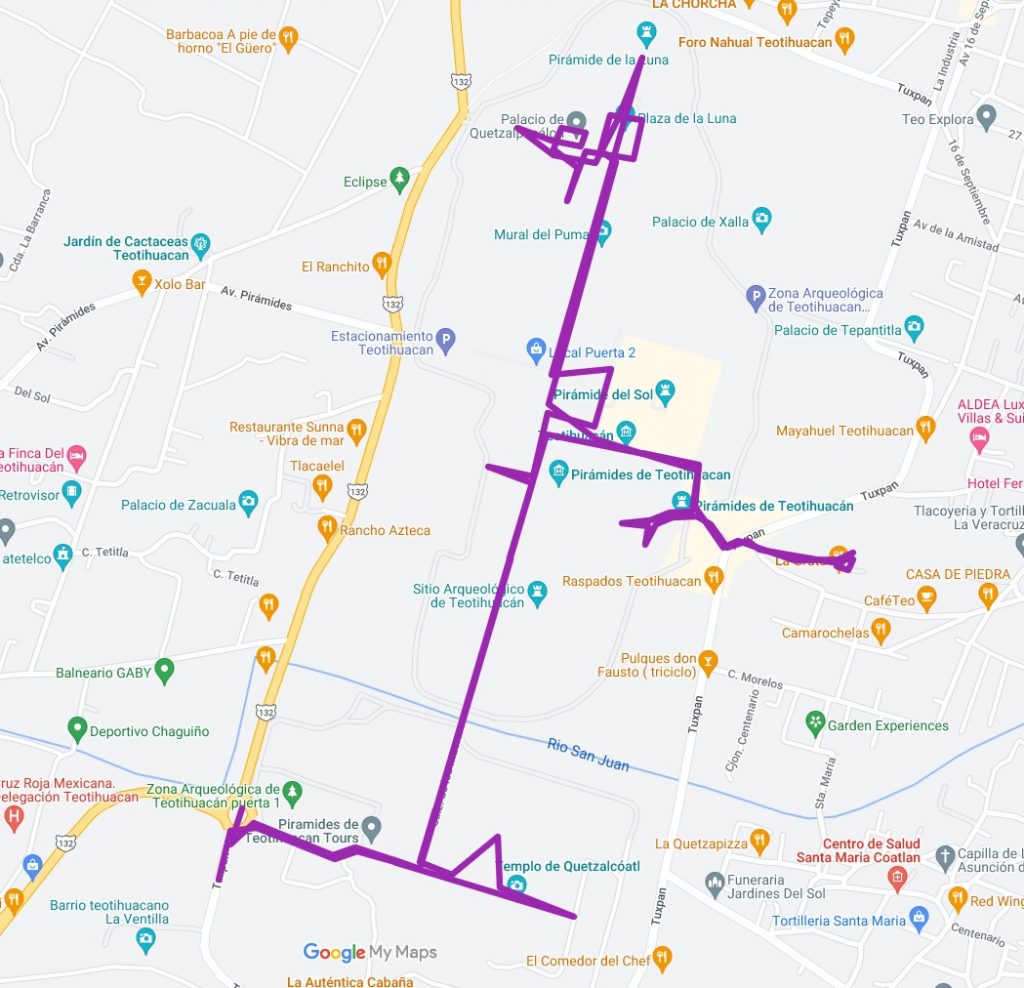
We began at the southern end of the site at the citadel and the Temple of Quetzalcoatl, a.k.a. the “third pyramid” of Teotihuacan. Quetzalcoatl was also known as the Feathered Serpent, a significant god throughout Mesoamerican beliefs whose iconography we grew to be quite fond of. The platform in front of this temple was still open for ascension and it gave us a taste of climbing a large ancient stone structure.
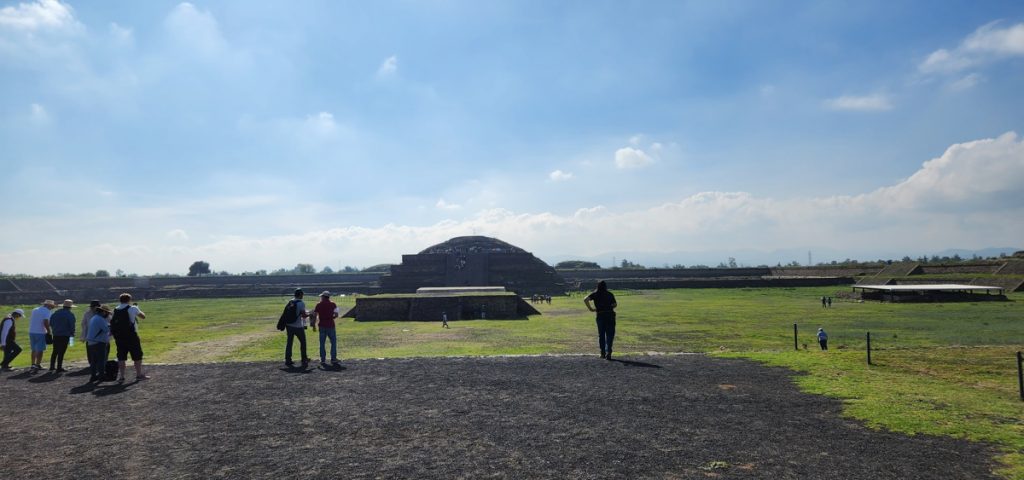
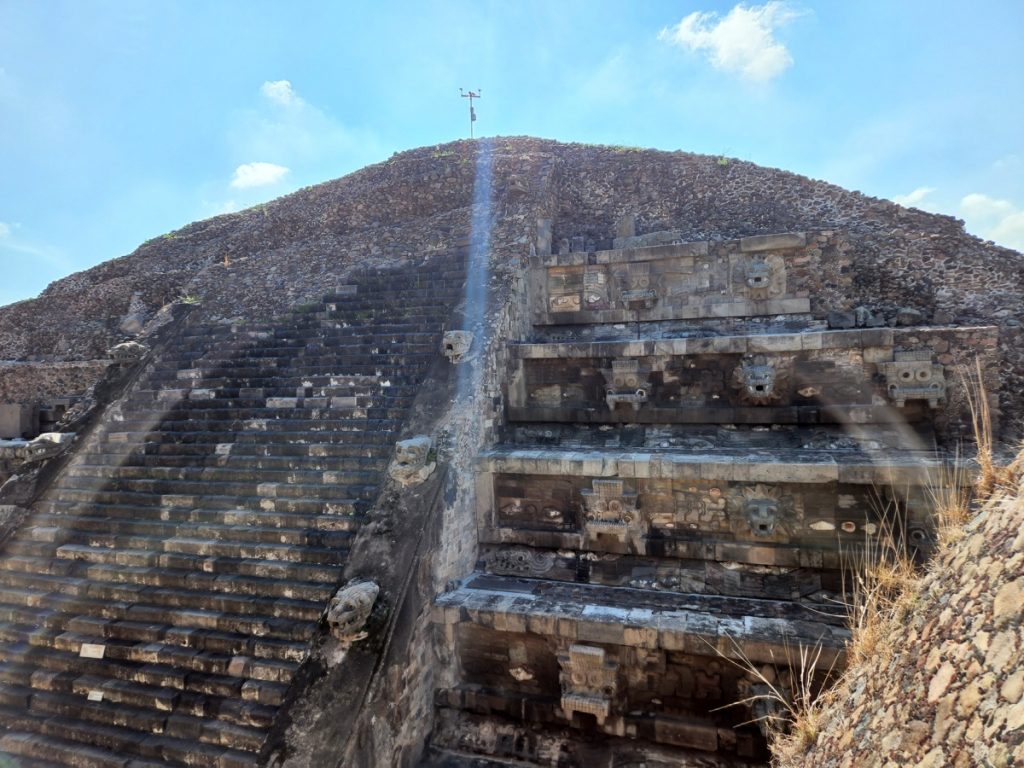
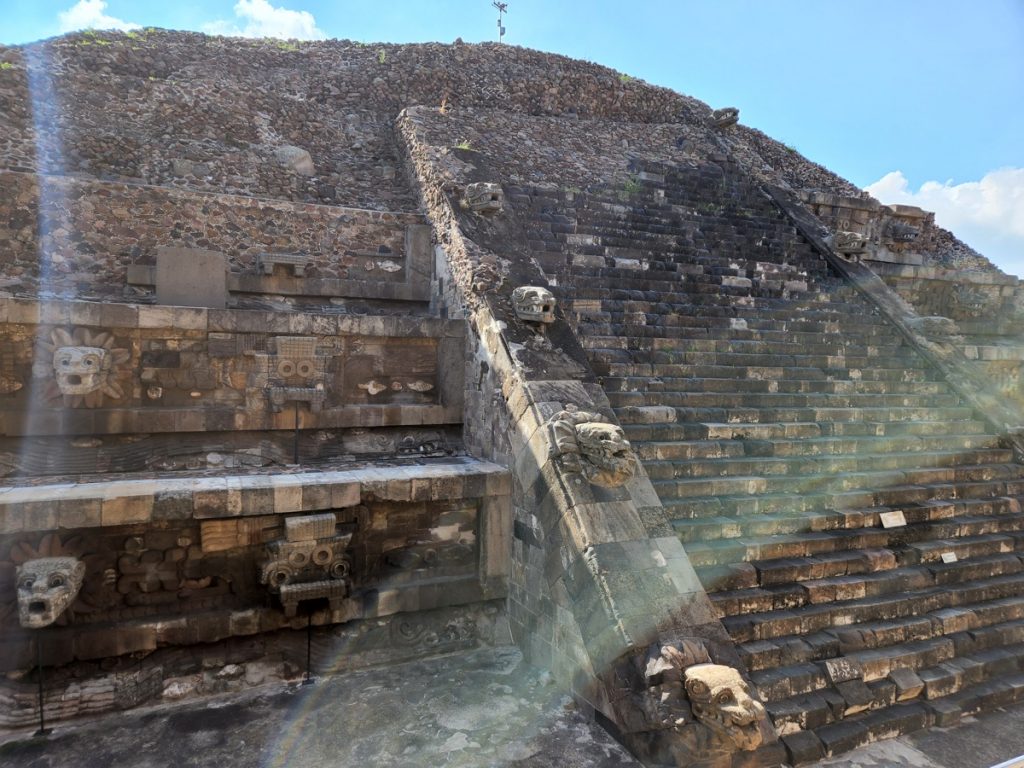
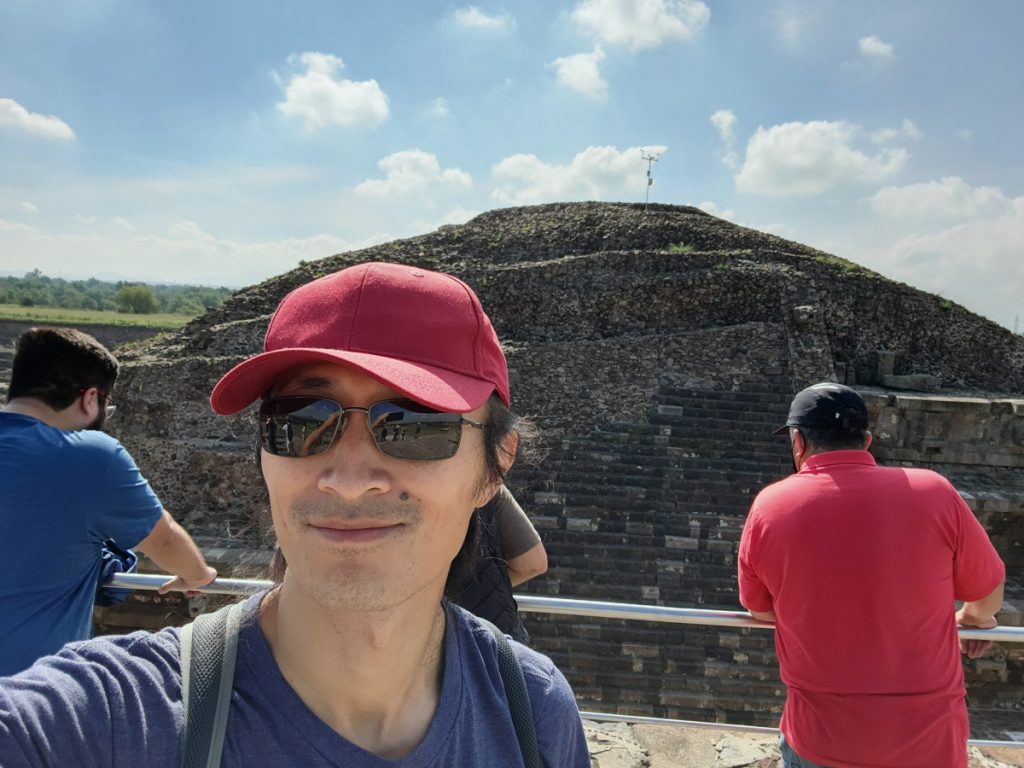
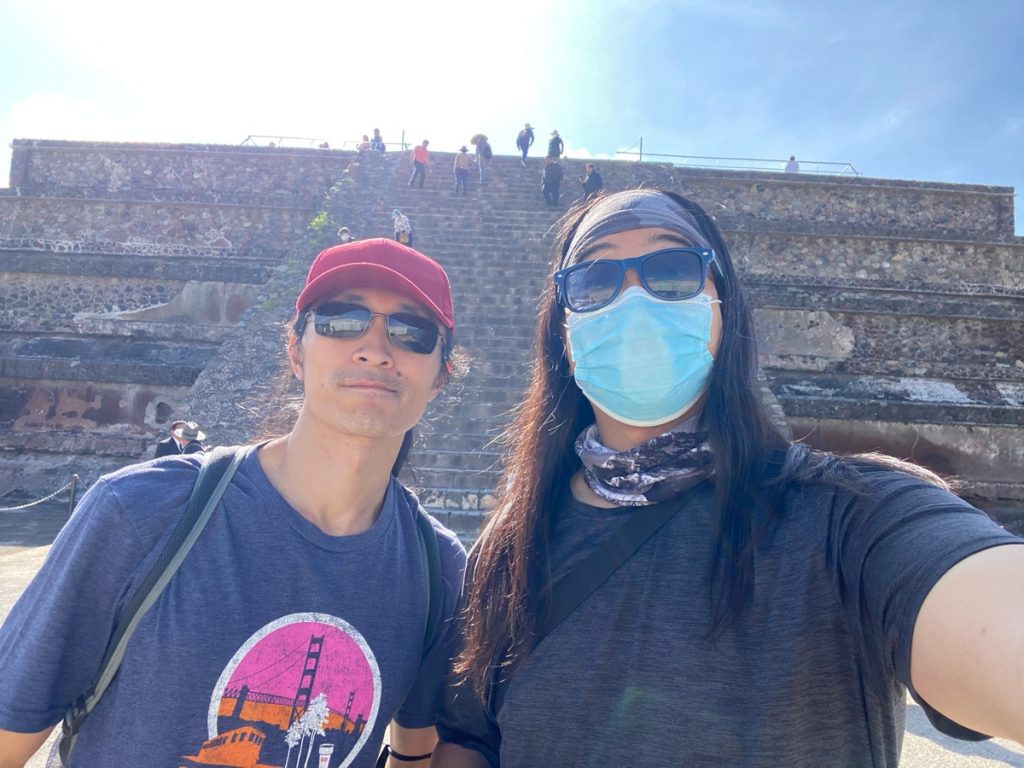
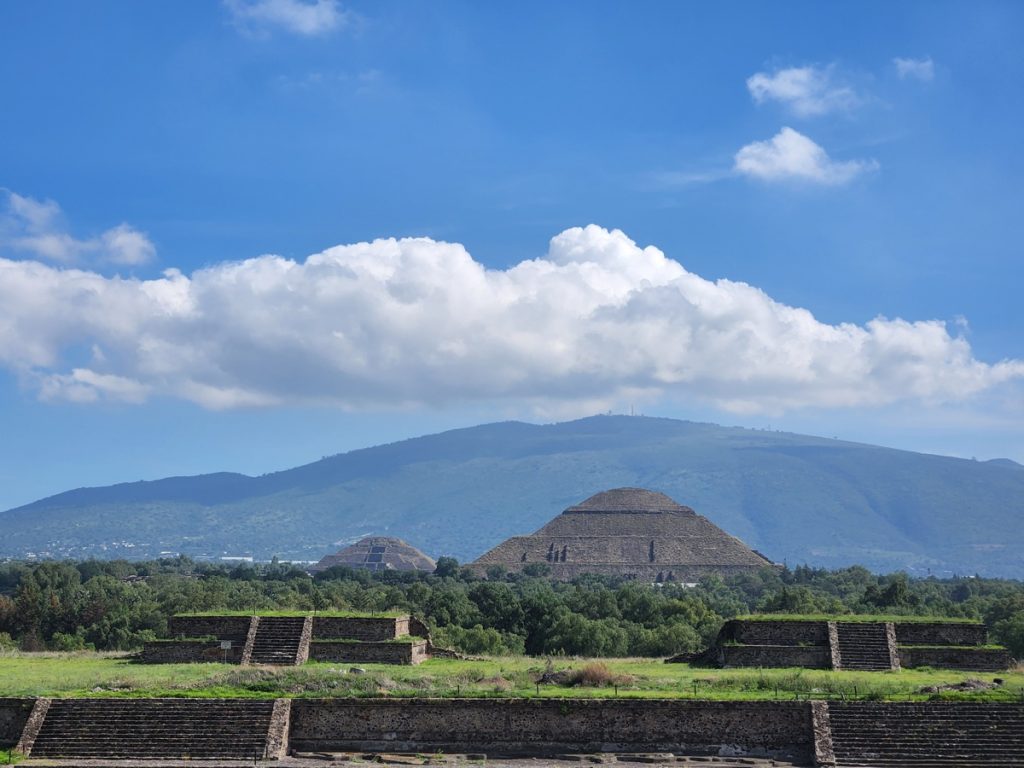
Then we made our way through the ancient marketplaces and up the famous Avenue of the Dead. The entire hike was under 2 miles, but the grassy landscape with its constant ups and downs was not as easy as I imagined! And we were humbled by the Pyramid of the Sun, then the Pyramid of the Moon. They were simply incredible to look at.
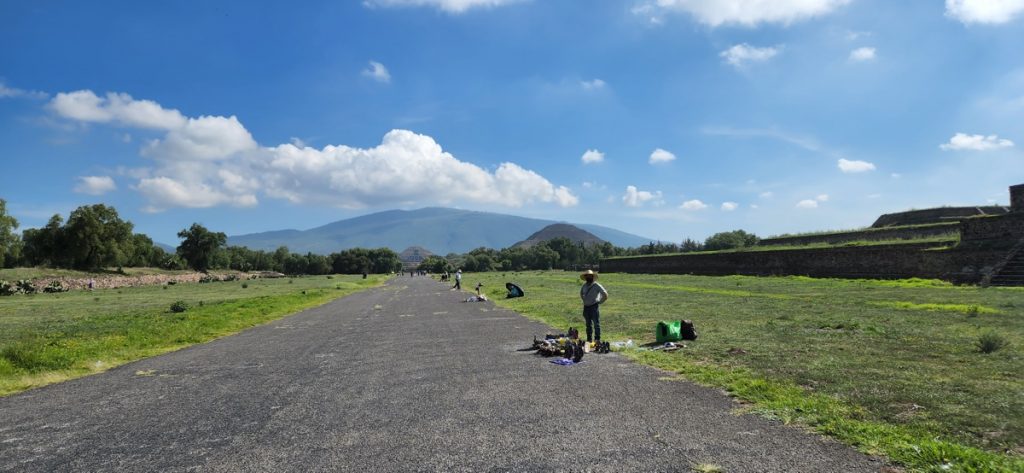
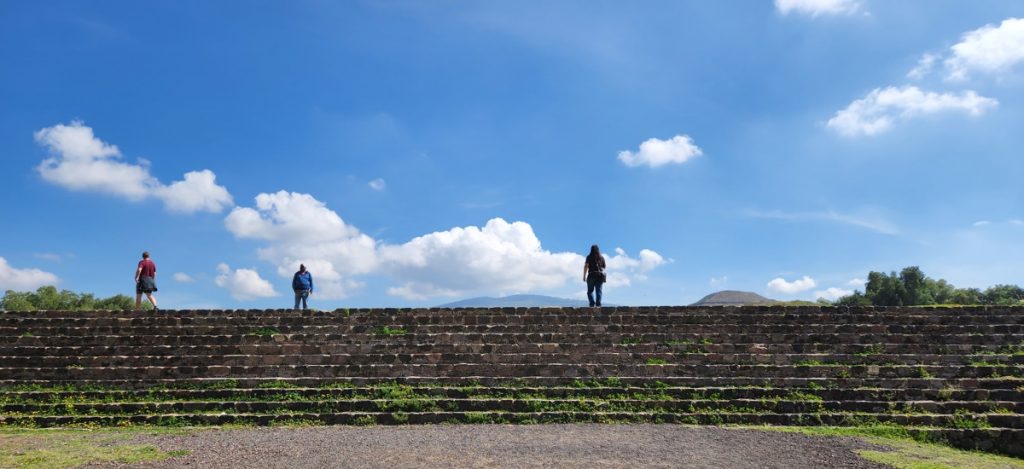
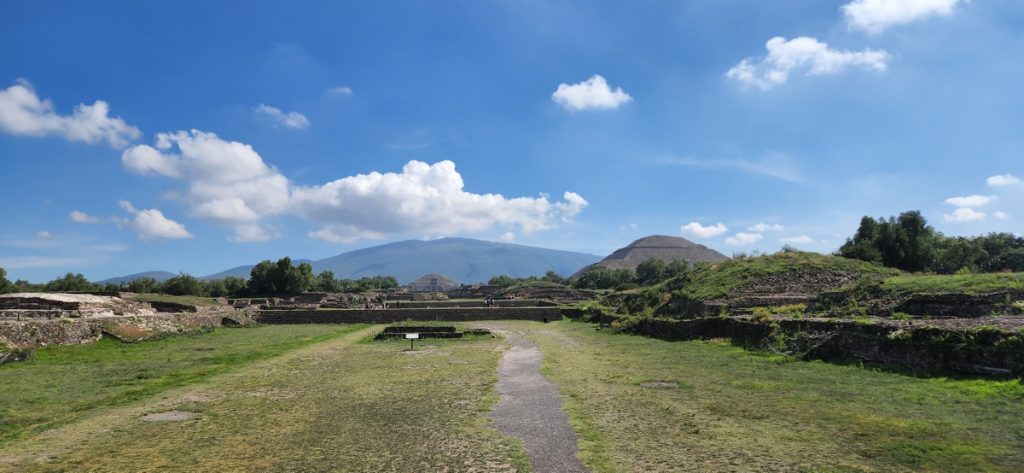
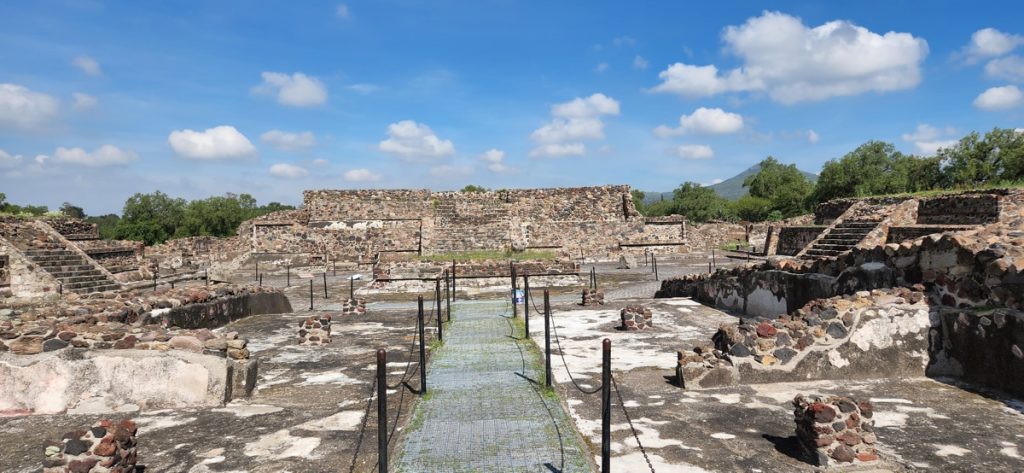
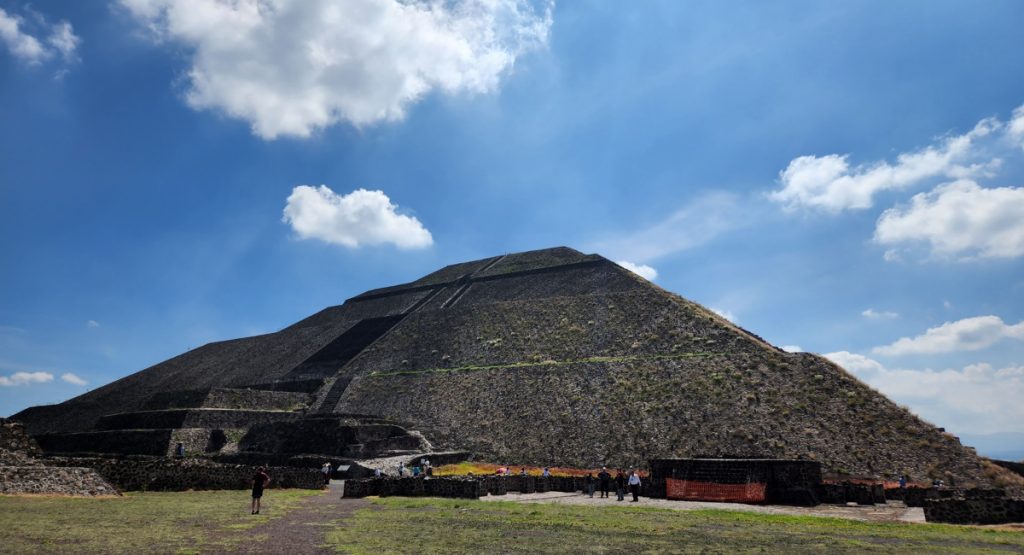
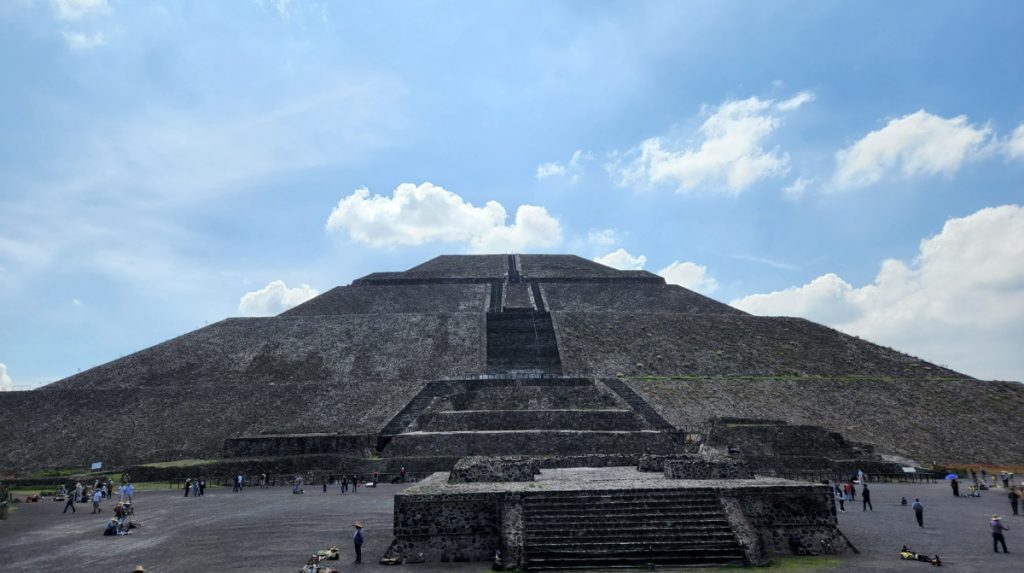
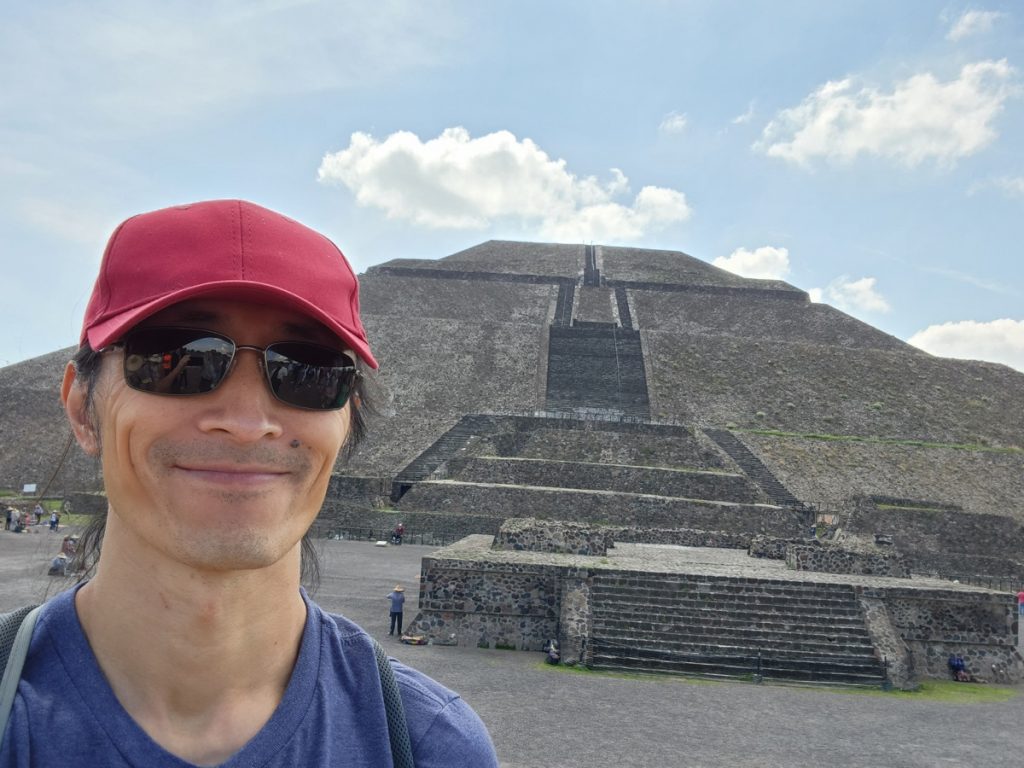
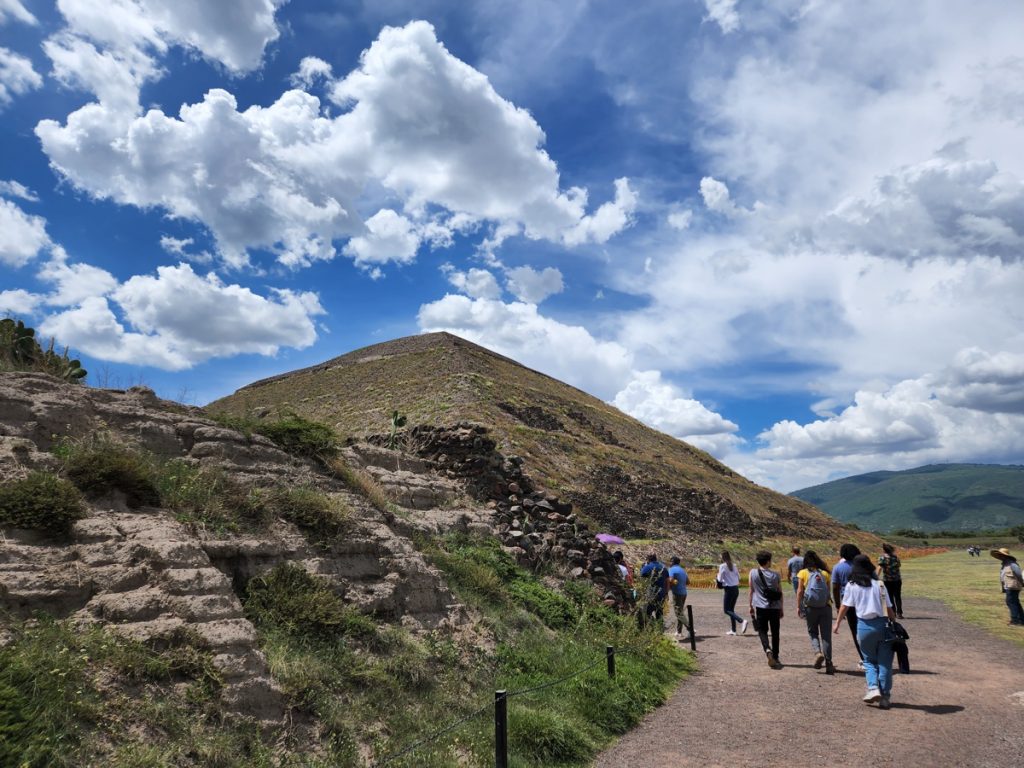
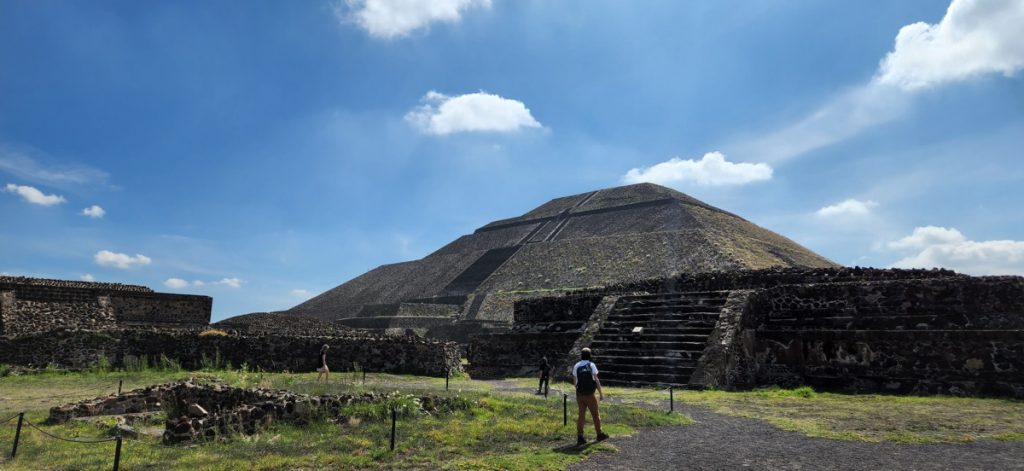
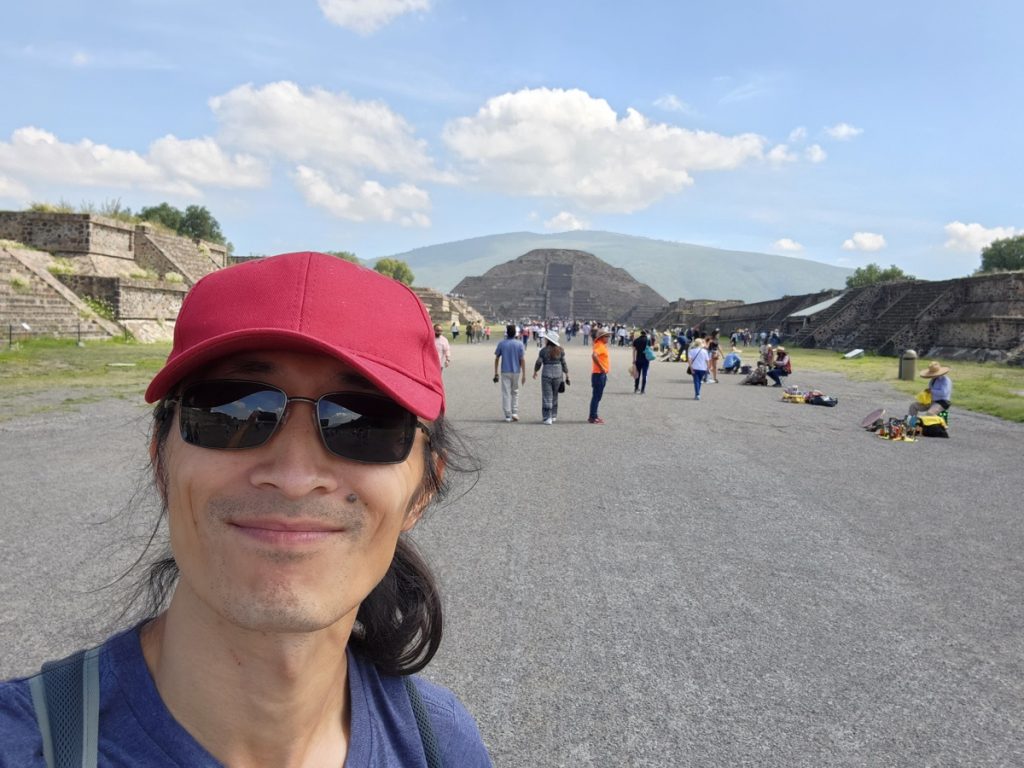
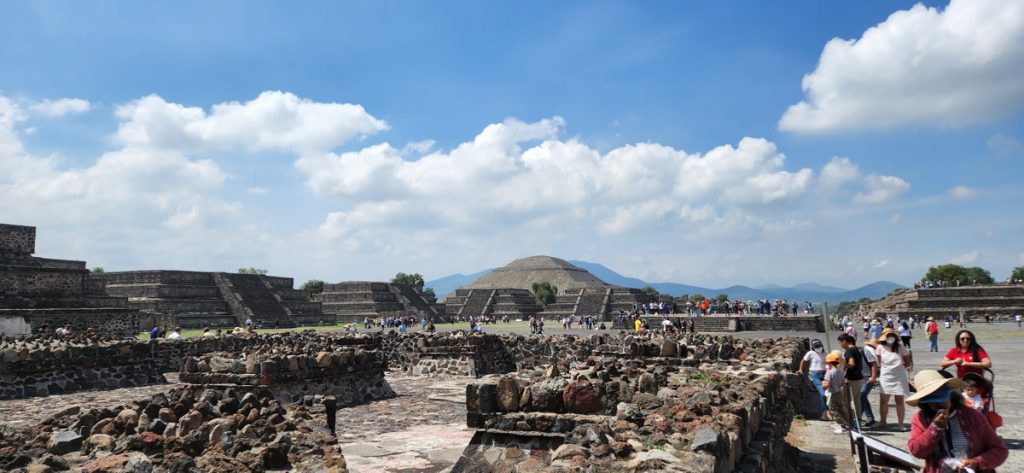
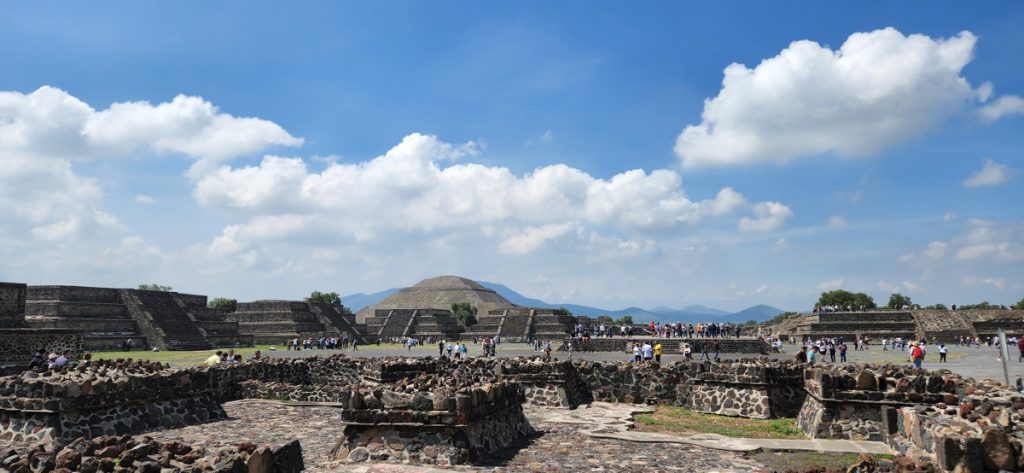
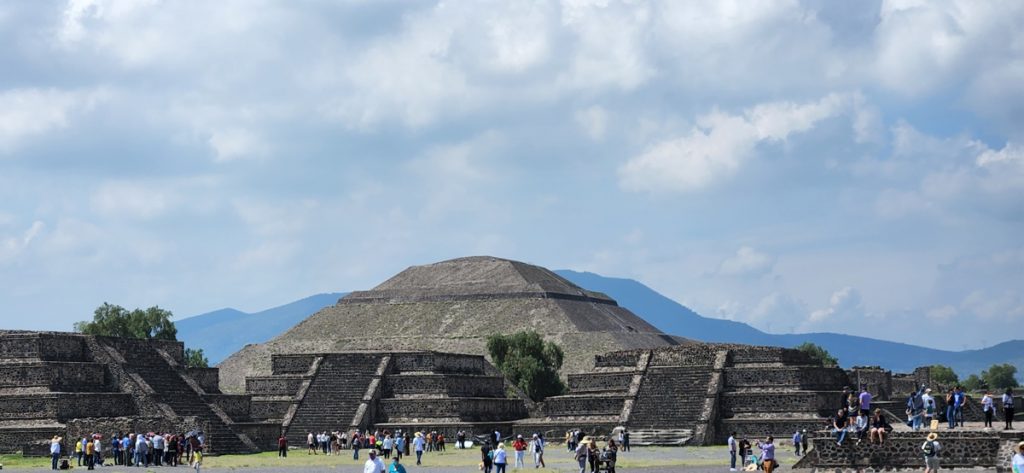
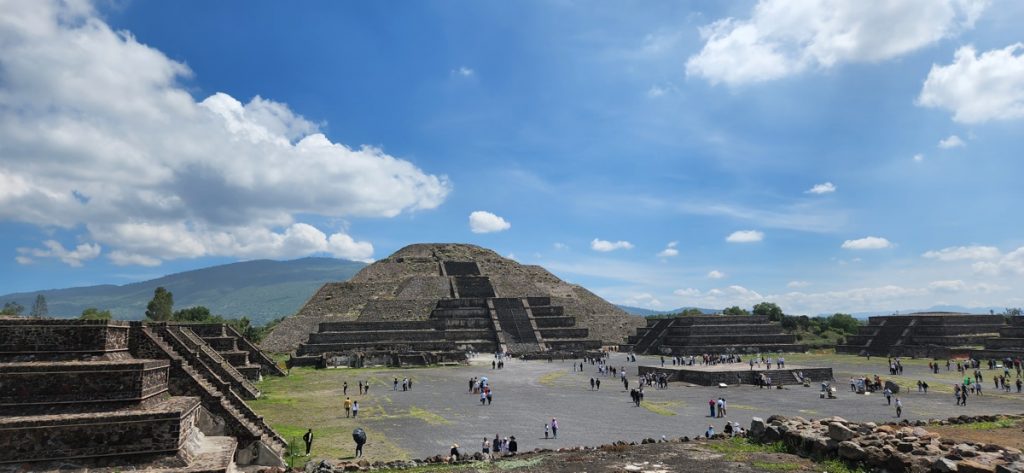
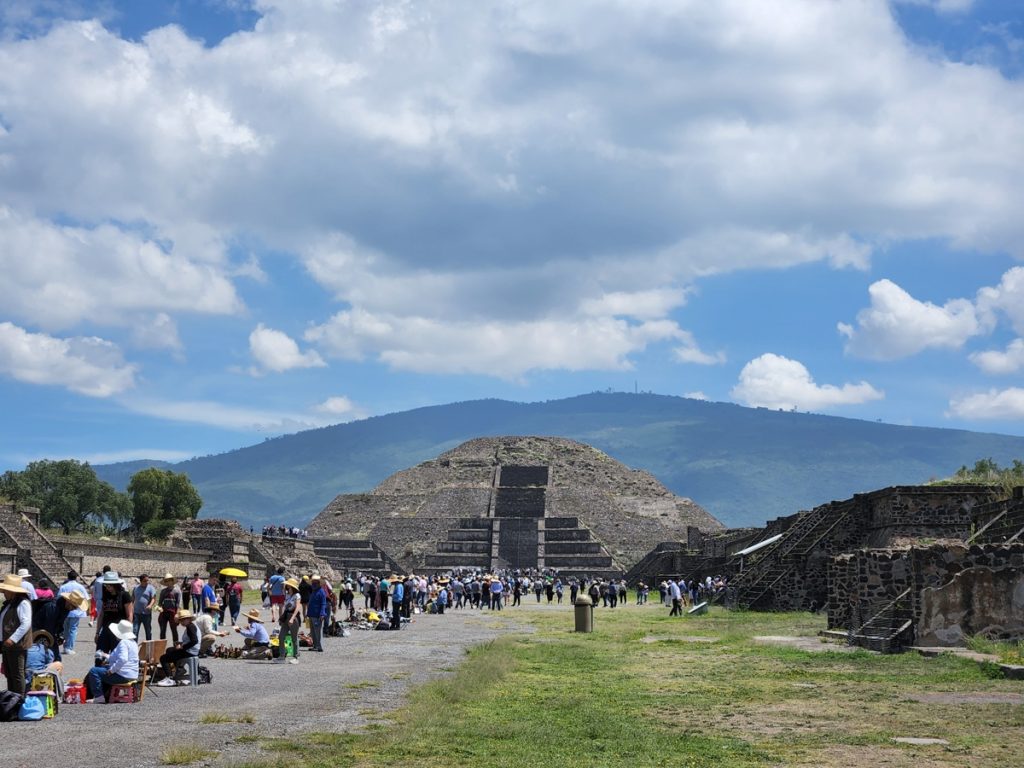
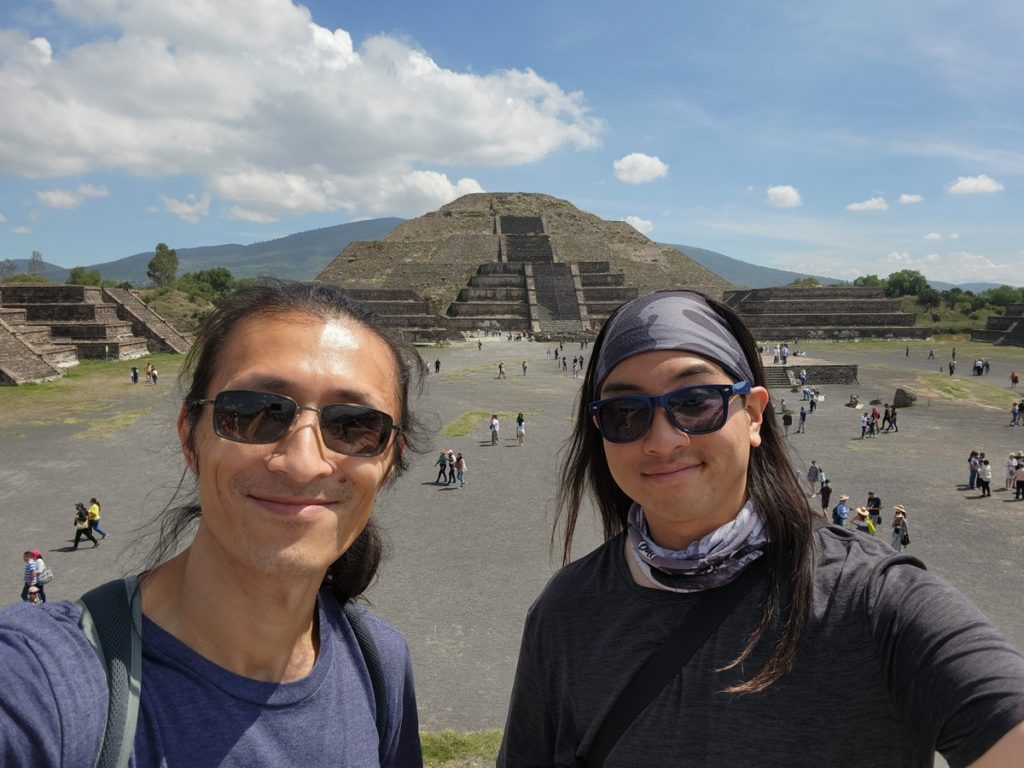
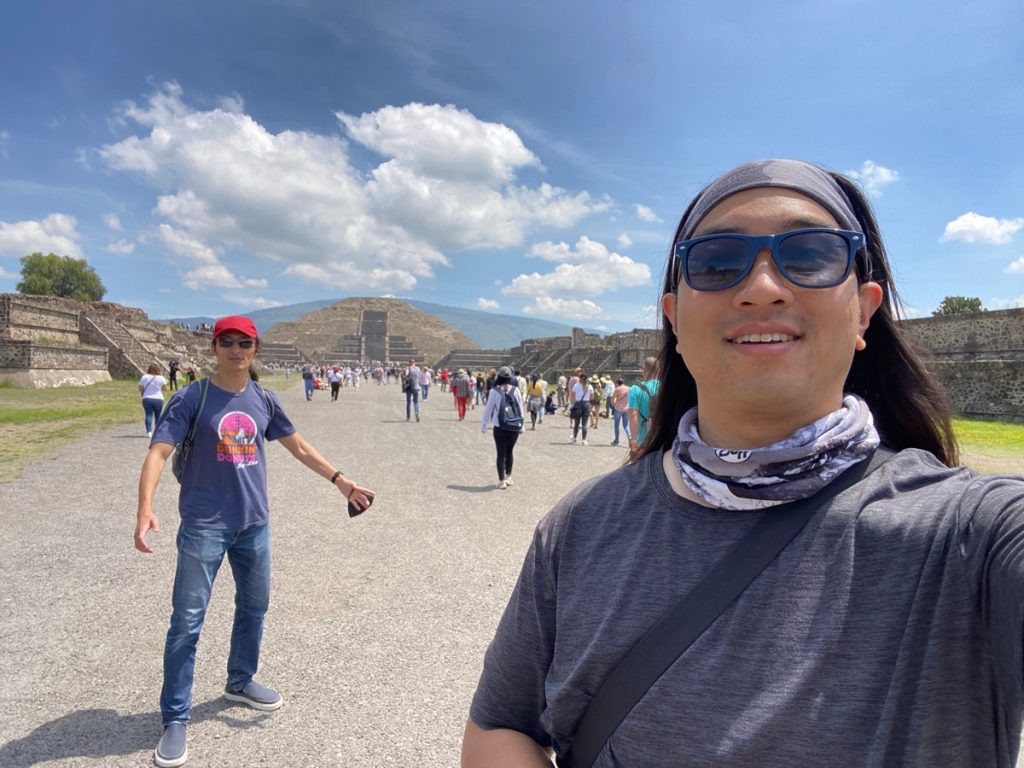
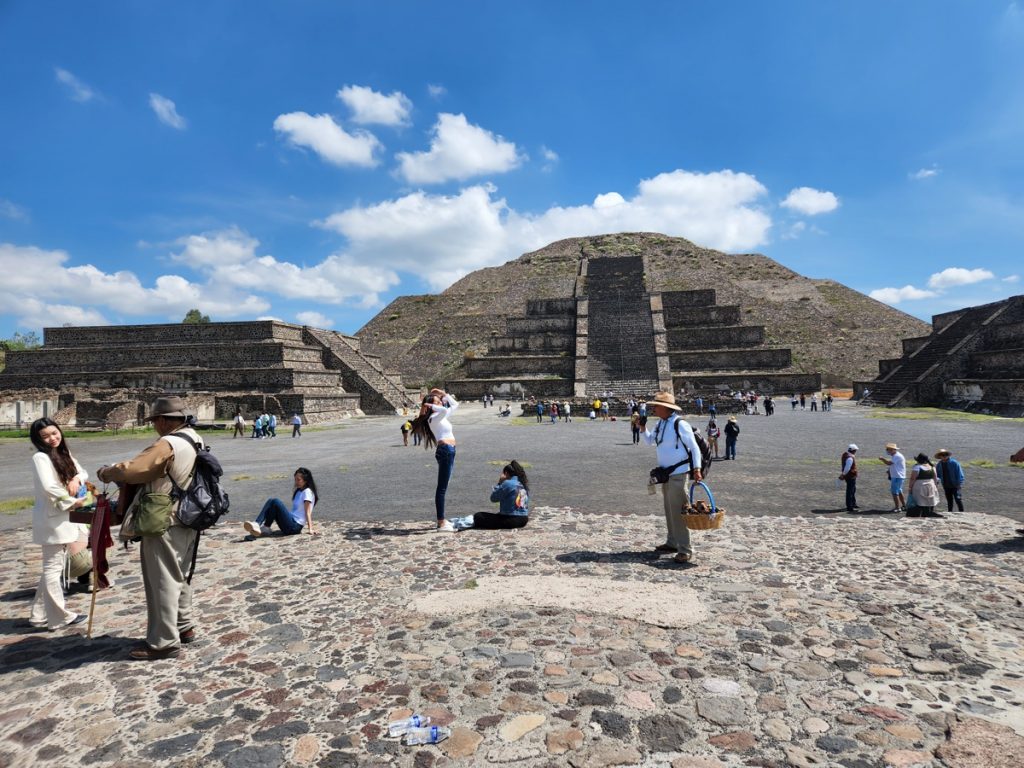
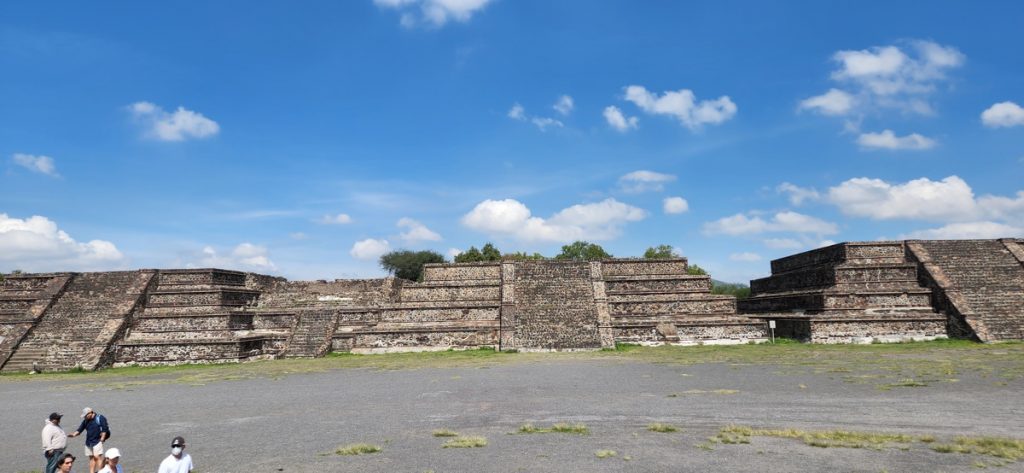
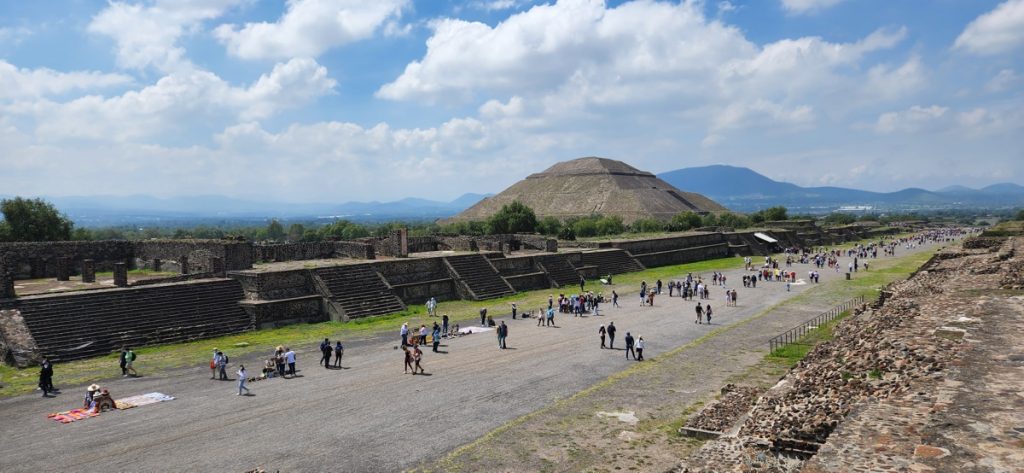
Marketing of tourism often says things like “San Francisco has a lot of history”, which I believe distorts people’s perception of time. A city hall is “old”. A church is “old”. But do we really appreciate the ancient-ness of each artifact by properly recognizing its age on an absolute scale? These Teotihuacan pyramids were originally constructed during 100-200 CE. That’s almost twice as old as William the Conqueror and the entire history of England. These pyramids predated the first historically recorded Japanese emperor by several hundred years. Although visiting Teotihuacan felt similar to visiting Ayutthaya, another abandoned capital city, this Mexican UNESCO World Heritage site had been a ghost town at least six times longer than its Thai counterpart! Even if we ignore the 1,300 years of abandonment, these huge stone structures were actively in use as political-religious centers for twice as long as United States’ history. Very humbling indeed.
La Gruta
After 3.5 hours of roaming around the ruins, we headed to lunch by walking around the Sun Pyramid and exiting the archeological site through Gate 5.
La Gruta was the most famous restaurant in Teotihuacan, sitting deep within its own gated compound. Walking down a lengthy driveway past a sizable parking lot, we found the famed restaurant underground… in a natural rock cave.
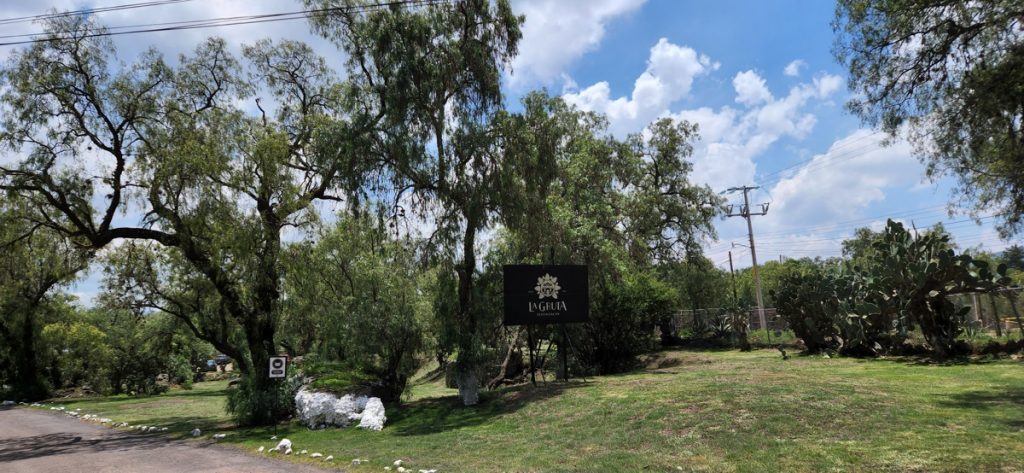
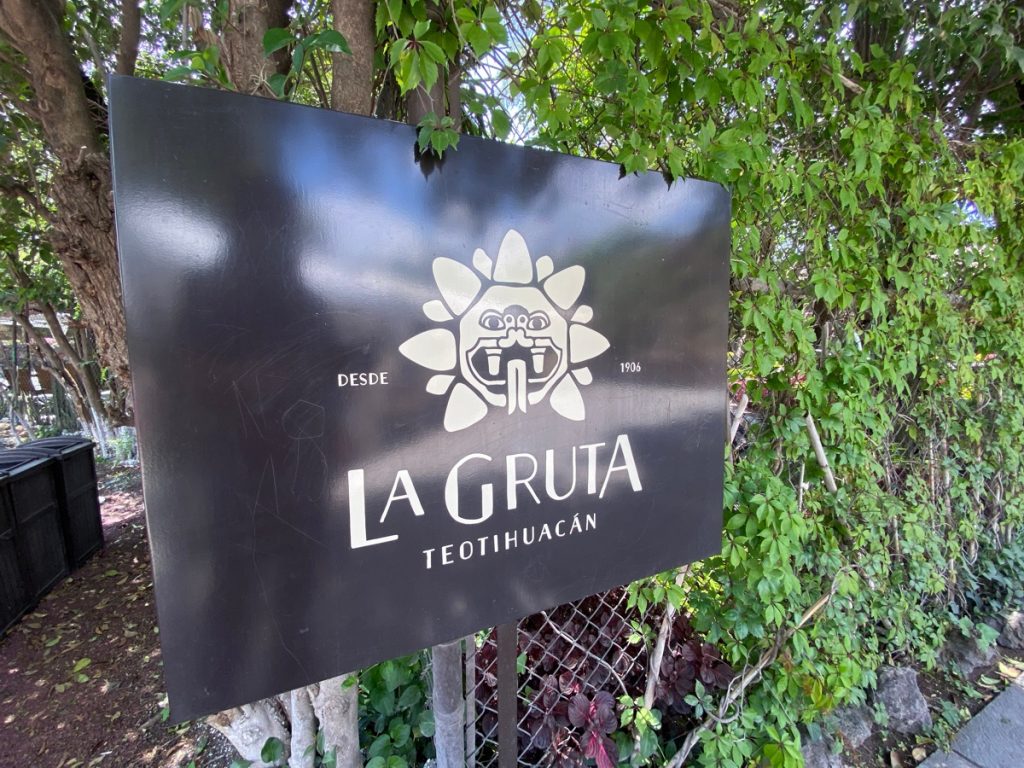

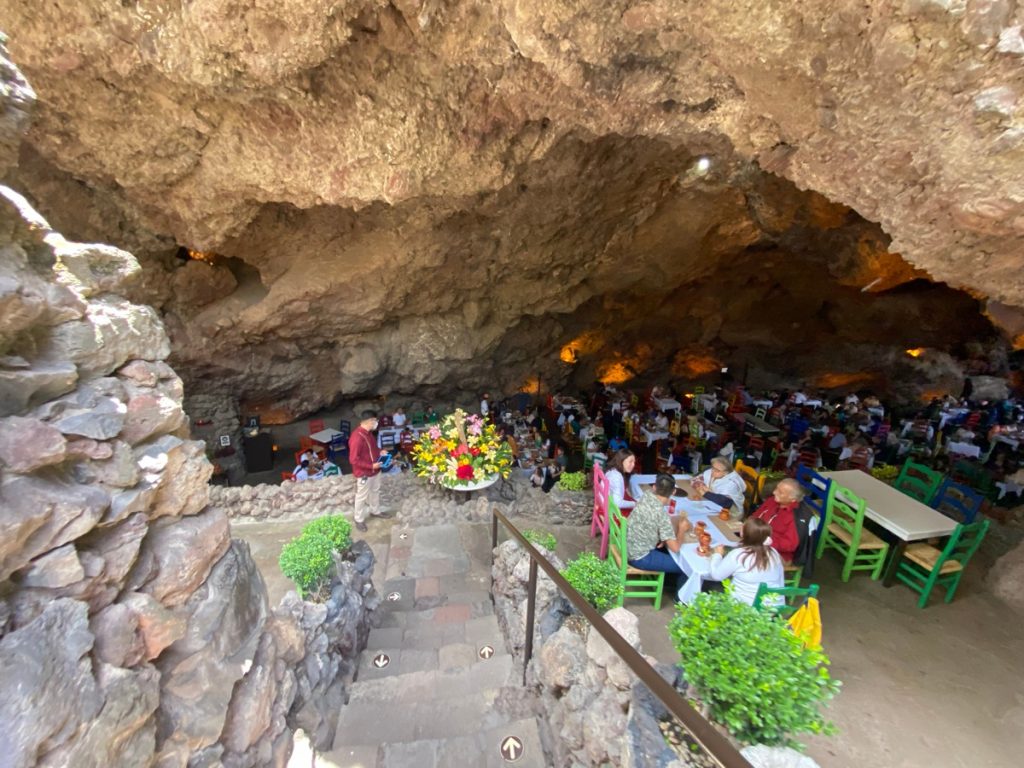
And yeah, the restaurant’s unique setup was why we came here among a flock of well-off tourists. Dining in a cave with both natural skylight and artificial illumination was both the coolest thing ever and super gimmicky. The food was priced at big American city levels, and tasted just okay. The menu appeared to be a checklist of key Mexican dishes, including a disproportionate amount of exotic ingredients. We opted for the grasshopper, saving caterpillars and ant larvae for another day.
Overall, I would say the unique photo op at this restaurant was well worth the price paid, but the calories may have been better consumed in a couple cocktails instead of the food.
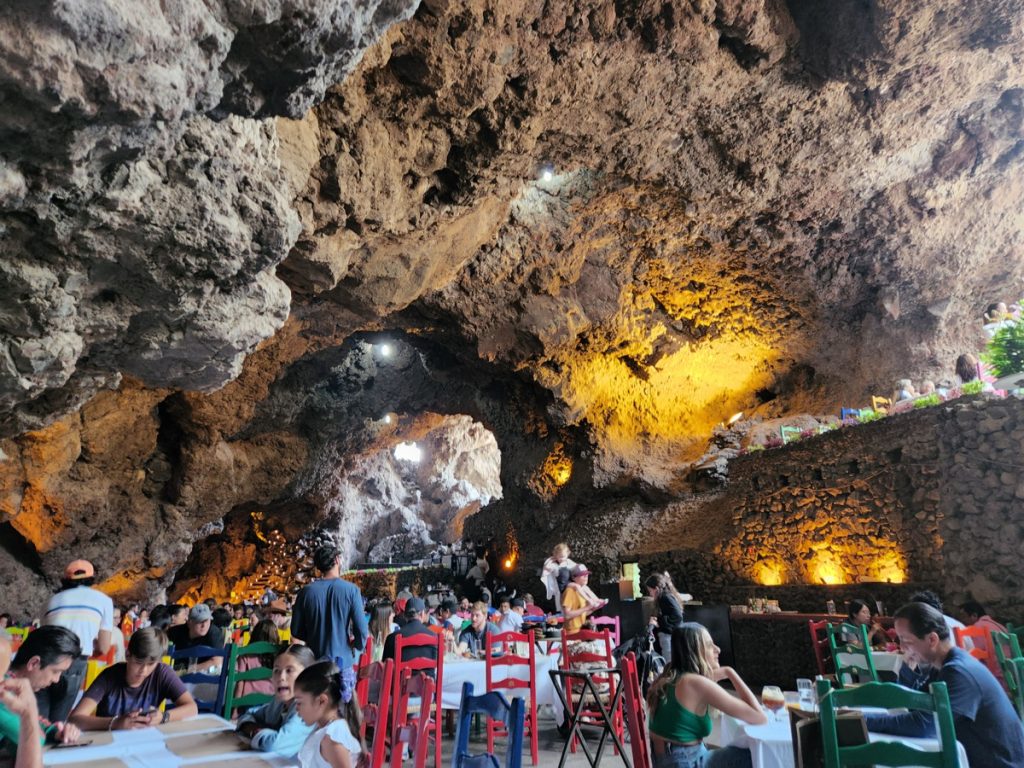
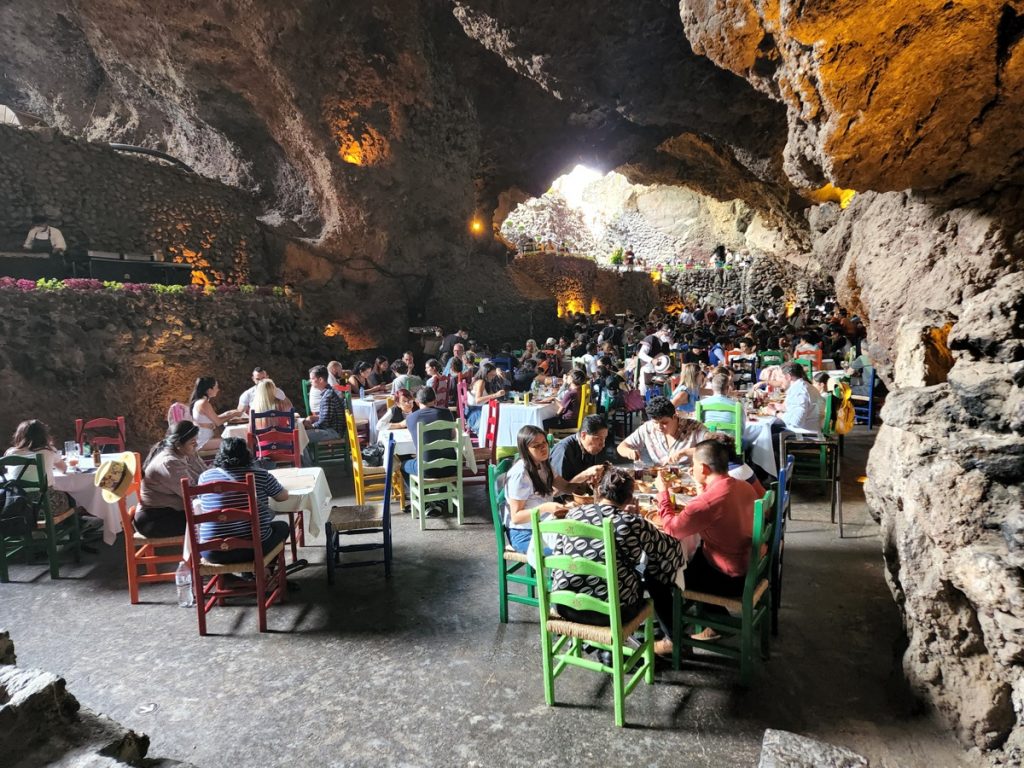
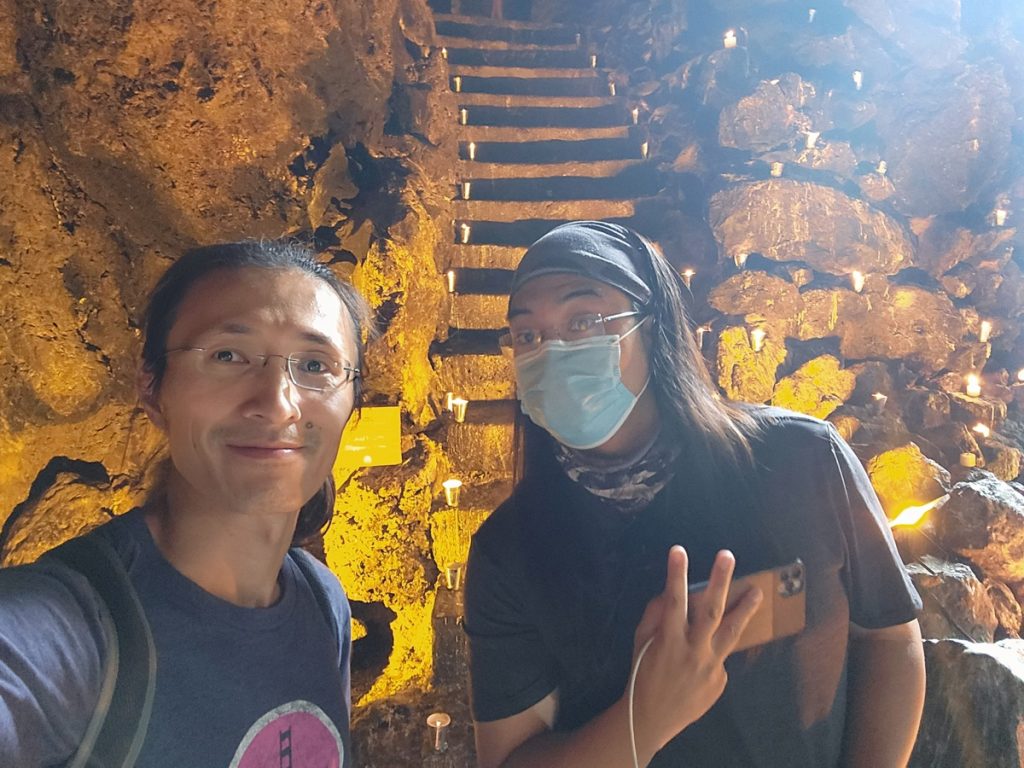
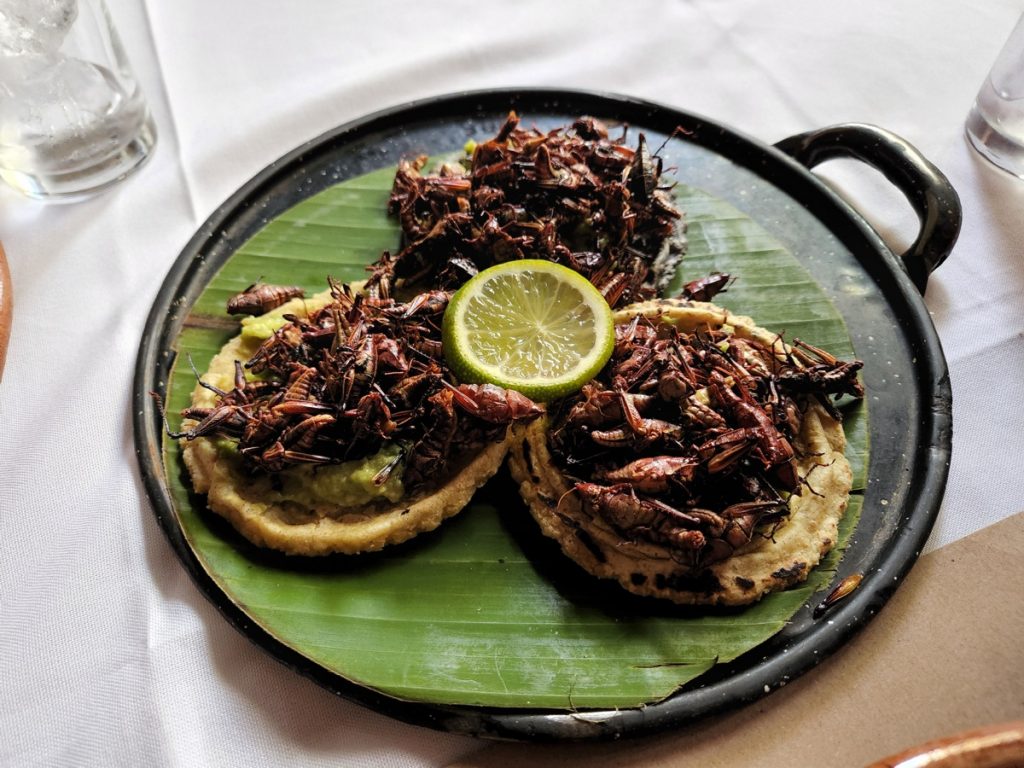
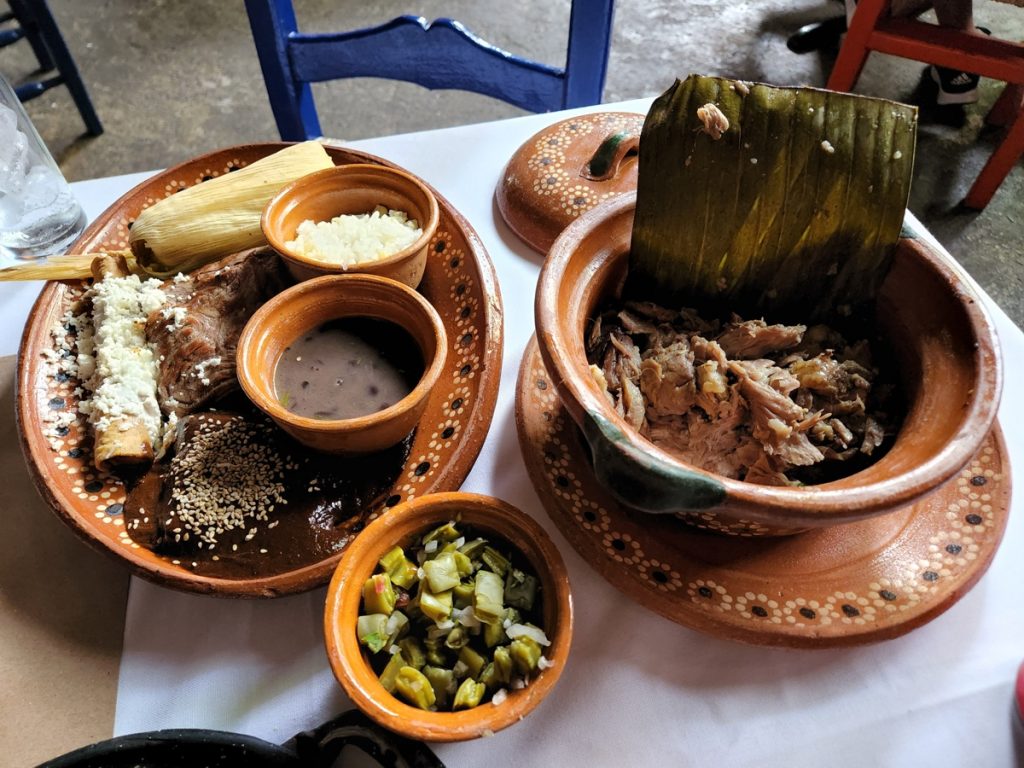
The Bus
Apparently no Uber driver was hanging out in the rural Teotihuacan countryside, so on the way back we had to take a bus at Gate 1, through which we entered the archeological site. There was no bus stop but people told us to wait at the “blue umbrella”, which was a fruit stand. I bought some watermelon from the lady but it wasn’t great.
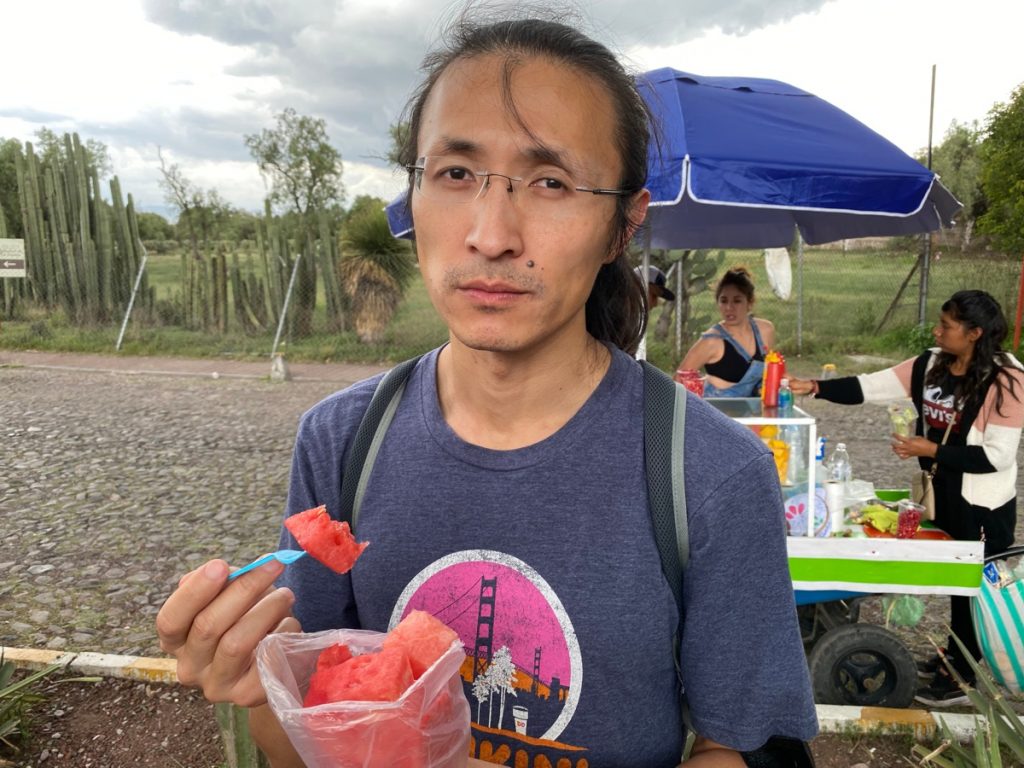
Waiting for the bus took about 25 minutes, halfway between two wildly different estimates that we were given. It cost 55 pesos (under $3) per person which was great for an hour-long ride. We boarded the already-full bus and were among the standing passengers who filled the aisle all the way to the door. The driver was a Need For Speed enthusiast and had a playlist to go with it, too. That… was awesome. Who wants to snooze in the back of a boring Uber when you can hold on tight to the luggage rack while the bus pumps fast music and overtakes cars on the freeway?
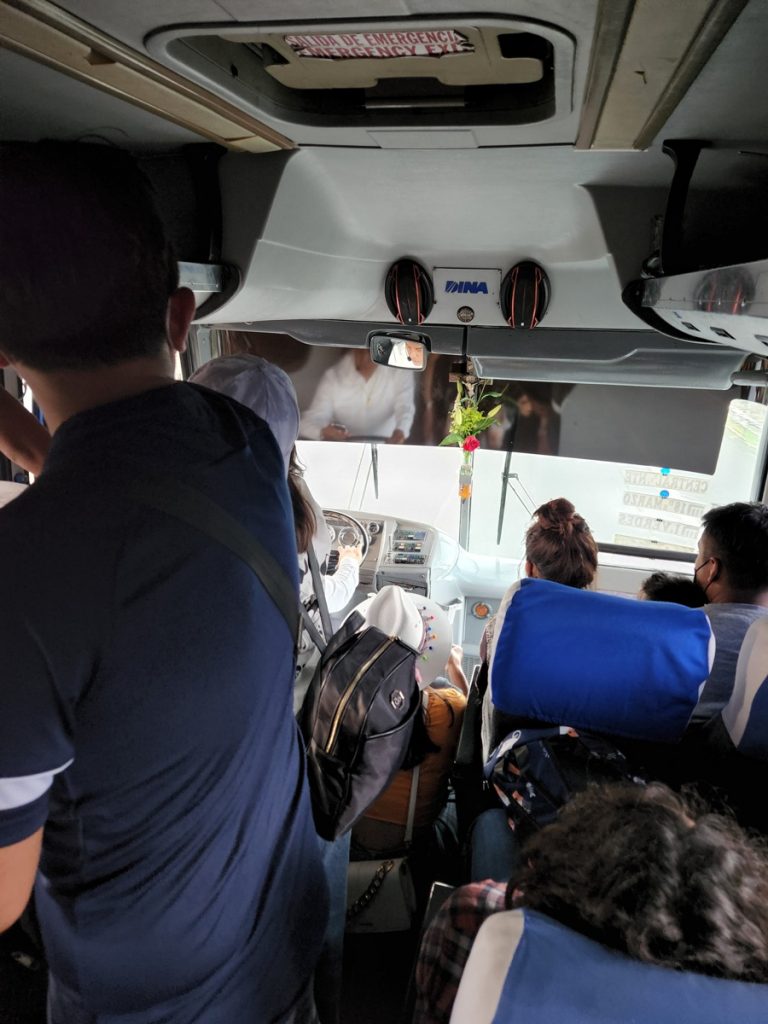
While approaching its final destination at Terminal Autobuses del Norte, the bus started making local stops. That was fantastic because I was concerned about having to back track an awkward distance from the bus station, and it turned out we were able to hop off exactly where we wanted to be next.
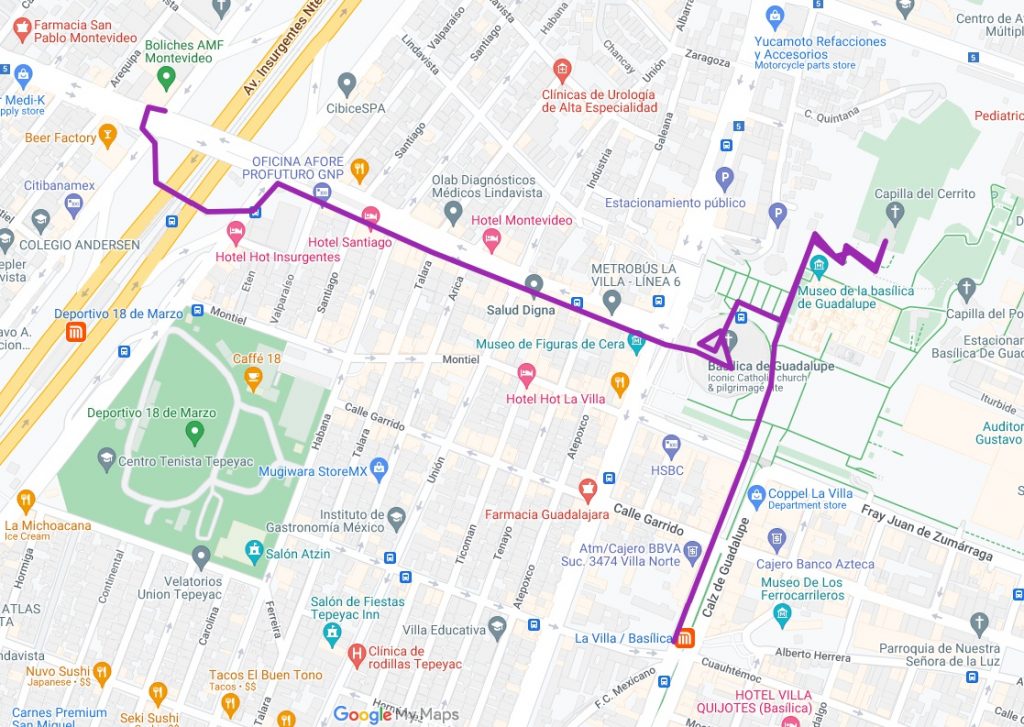
Basilica de Guadalupe
Basilica de Guadalupe is reportedly the world’s most visited Catholic pilgrimage site. While the physical church itself is artistically rather disappointing, it’s home to the miracle cloak with an image of an indigenous Virgin Mary, and is situated at Tepeyac Hill where the miracle took place 500 years ago. Lady Guadalupe is not only a symbol of Mexico but also the epicenter of Latin American Catholicism. Read this Wikipedia page to learn more.
Lady Guadalupe is very much like Mona Lisa – her image is everywhere on and off the Internet, and it isn’t even particularly artistic. For non-believers, there was little value in seeing the real thing in person… but if you were in the neighborhood and didn’t pay a visit to something this famous, were you actually there?
Logistically speaking for the average tourist, this church is best visited on the way back from Teotihuacan. Because it’s situated in the same general direction (NE) to the city center, you’d pass by it either on a bus or in a car. It’s also quite a bit farther than most tourist attractions within the city, so taking a separate trip just to see it can be time consuming.
Phil and I were not religious people but we were both fascinated by Lady Guadalupe. The story of Guadalupe is a textbook example of how you integrate two drastically different groups of people by creating a hybrid character. So many on the American continents are devout Catholics now because of this supposed miracle 500 years ago. While we don’t believe in magic, the cloak itself has undergone quite a bit of scientific examinations from skeptics and the element of mystery remained. Also, Virgin Mary’s image appearing on a cloak? It just had so much Jesus Toast vibes!
After arriving at the basilica and spending a few minutes observing the mega-church sermon in action, we headed to the lower level to see Lady Guadalupe. Then we saw the most amazing thing… the setup. The miracle cloak was hung high on a wall, viewable only from the four parallel moving walkways in front of it. These moving walkways, barely 20 feet in length, slowly but continuously pushed the crowd from left to right. Anyone at the end of the ride could walk around the circular hallway, by the gift shop with thousands of Lady Guadalupe souvenirs, and re-enter the queue for a second chance at admiring her holiness. It was genius! We had traveled the world and seen a lot of major attractions (still cringe at the memory of Mona Lisa), and nobody had a crowd control system as gentle and as effective as this basilica’s!
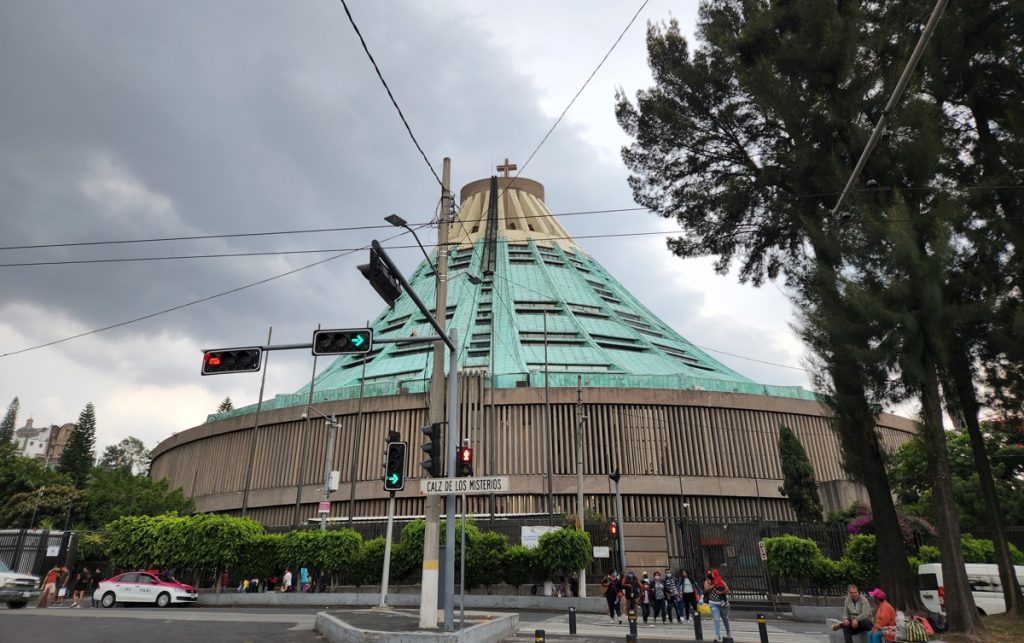
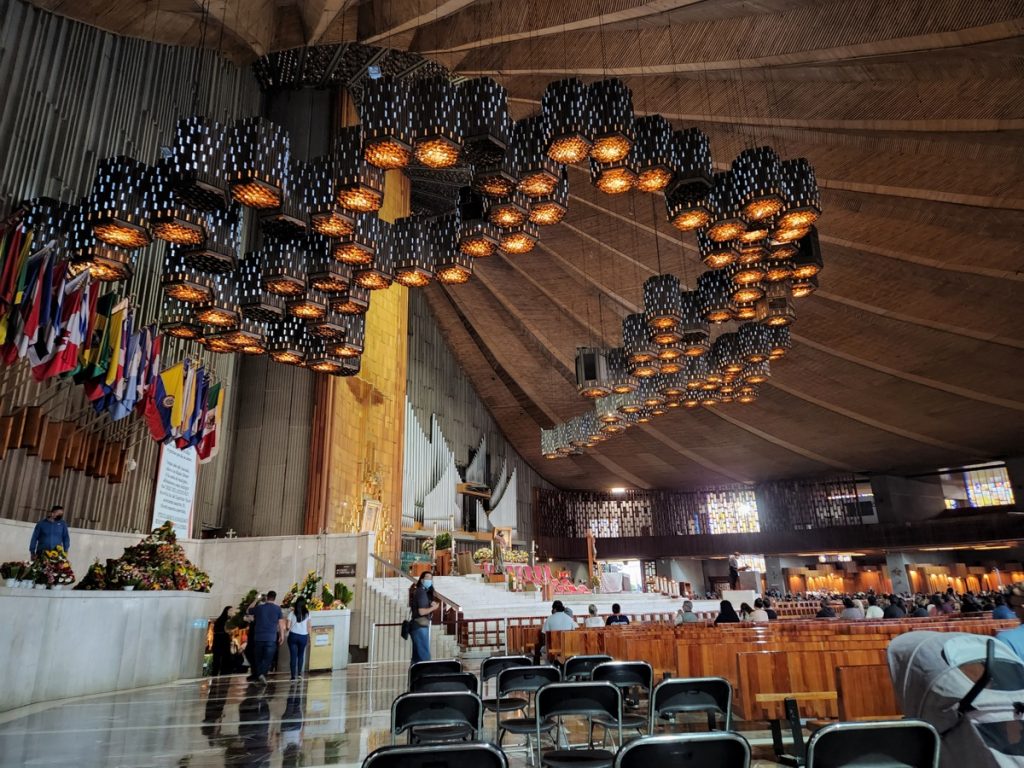
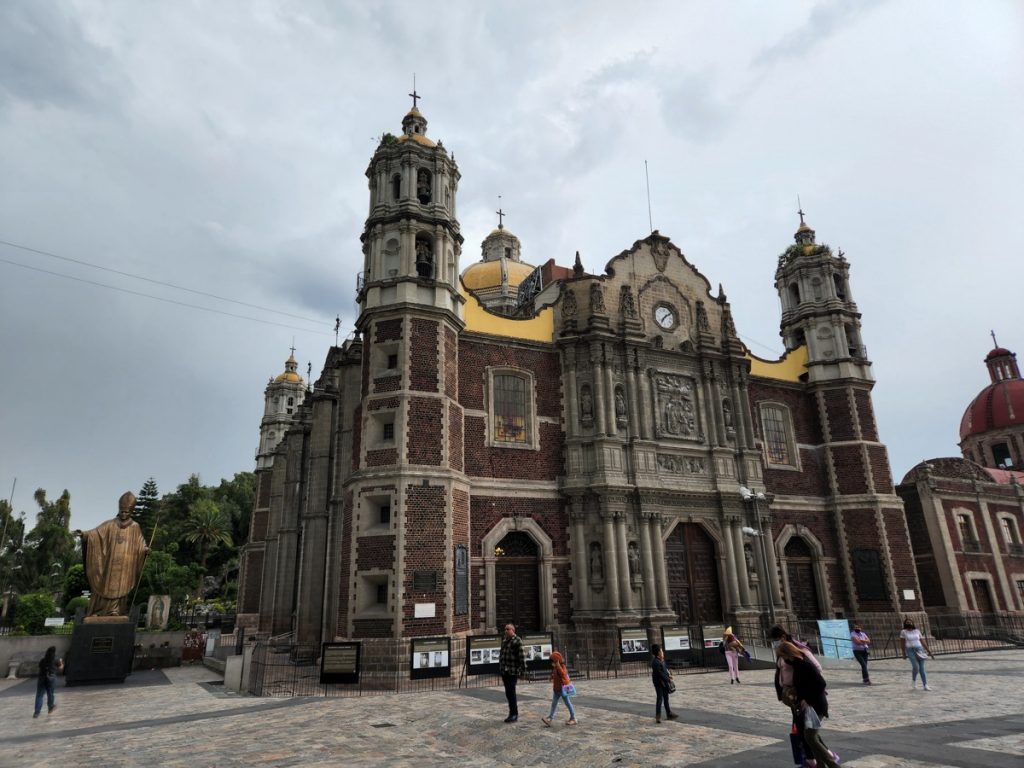
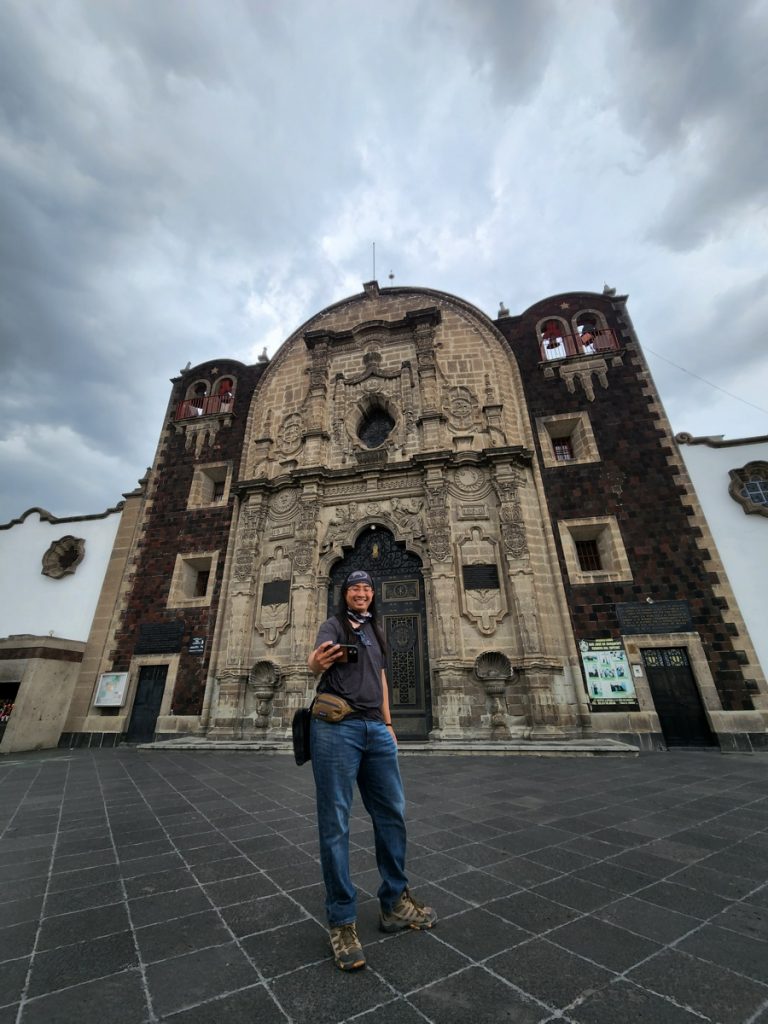
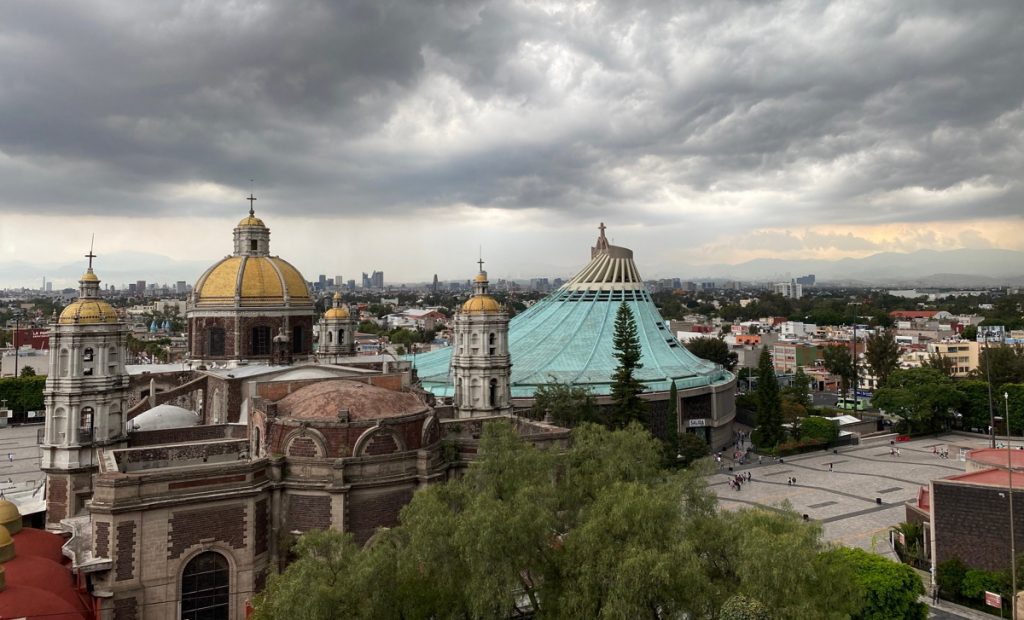
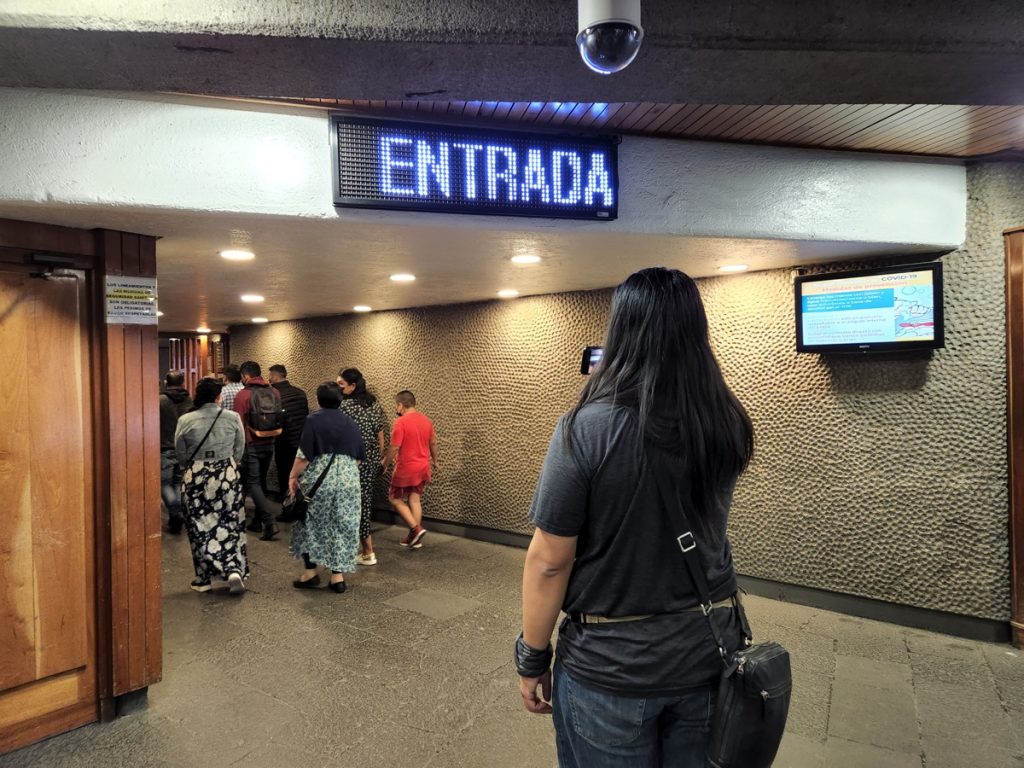
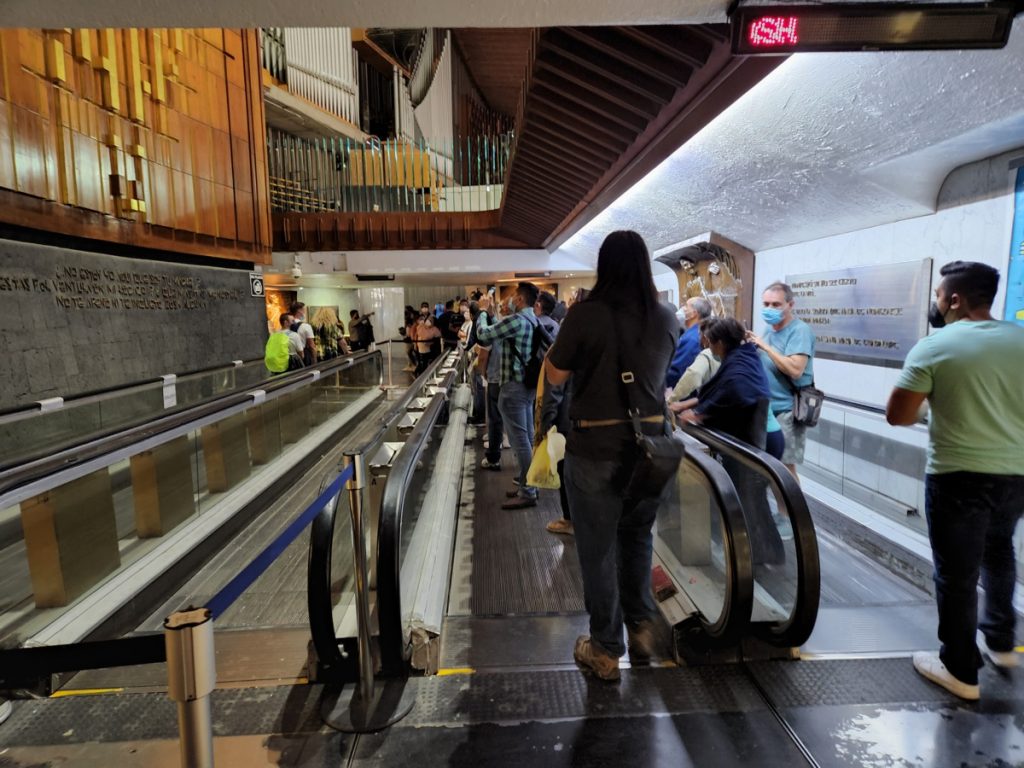
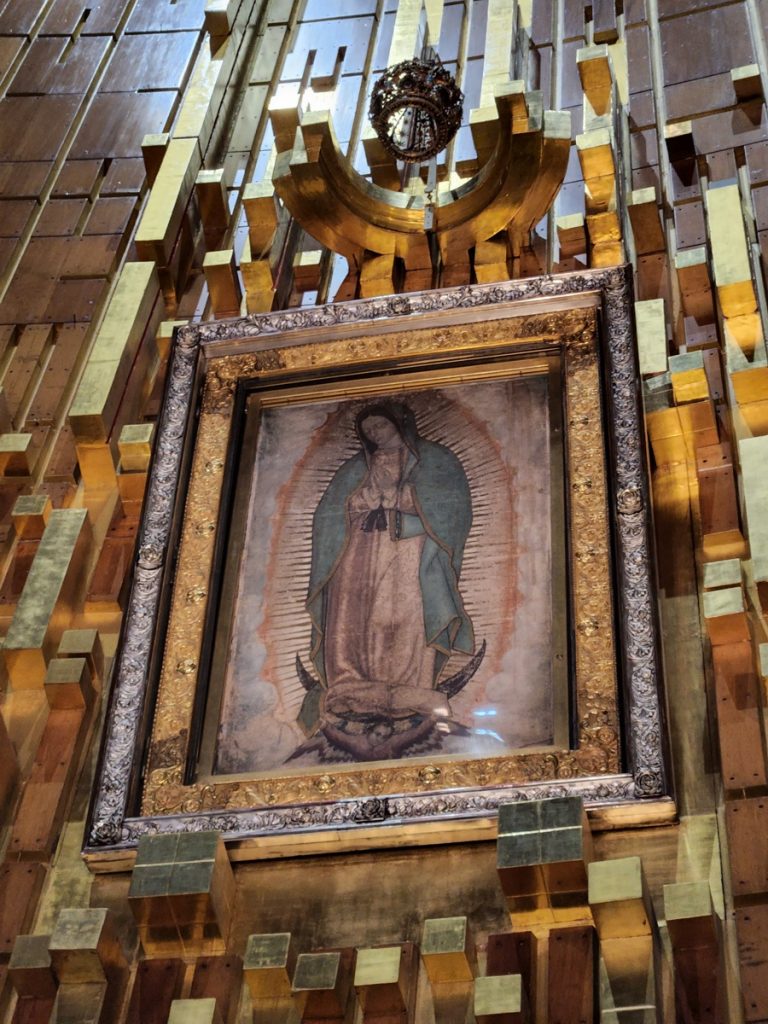
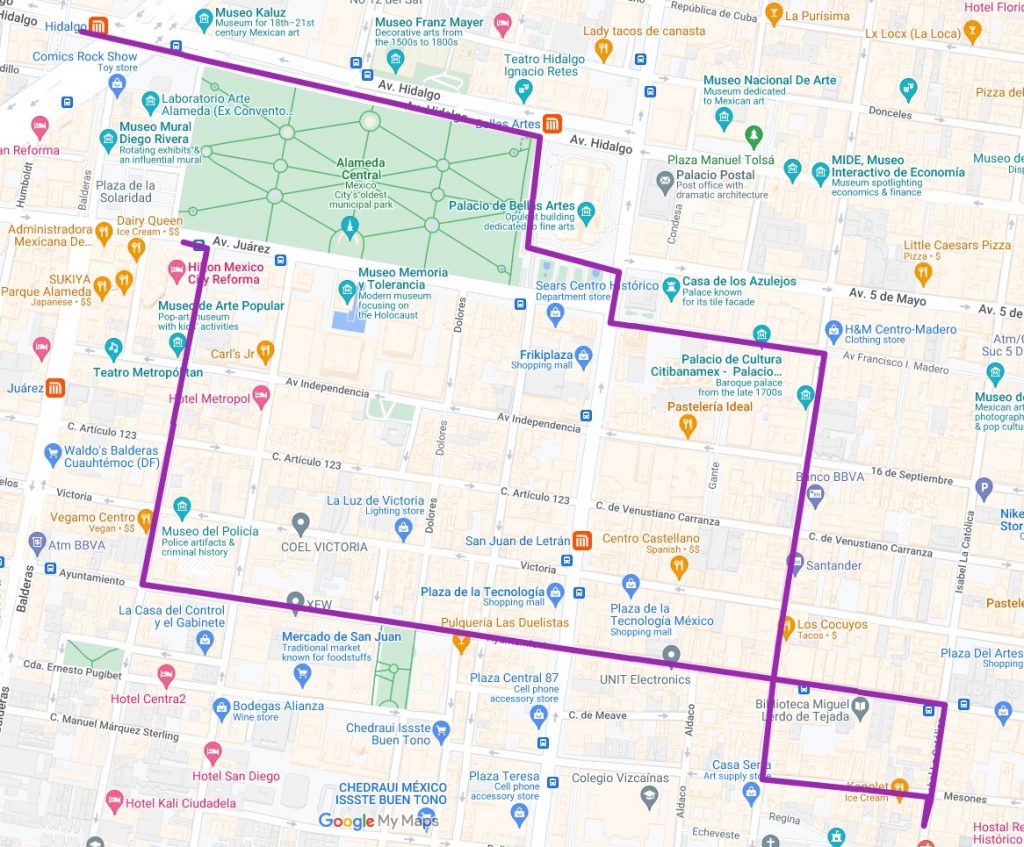
Taqueria El Torito
After Guadalupe, we took the subway back to Centro and headed to Taqueria El Torito. It was two blocks away from Los Cocuyos and supposedly had equally delicious suadero. Its menu was far more limited though – just suadero, tripa, and campechano (which was merely suadero + tripa). Since we were all pumped about tacos now, we went ahead and ordered six of each. So our running total reached 36 tacos within the first 24 hours in CDMX.
We enjoyed the time waiting for our order because the taqueria crew and its patrons were a super cool bunch. We had gotten curious about the pot of herbs they had on the counter (as did Los Cocuyos), and learned that it was called papalo and you could use it as a taco topping. An old lady customer enthusiastically explained to me how good it was, and the taqueria guy dressed some up with lime and salt on a plate for me to try. It was not bad, but the super herbal flavor would easily overpower the rest of the taco, so I wasn’t sure how people strike a balance.
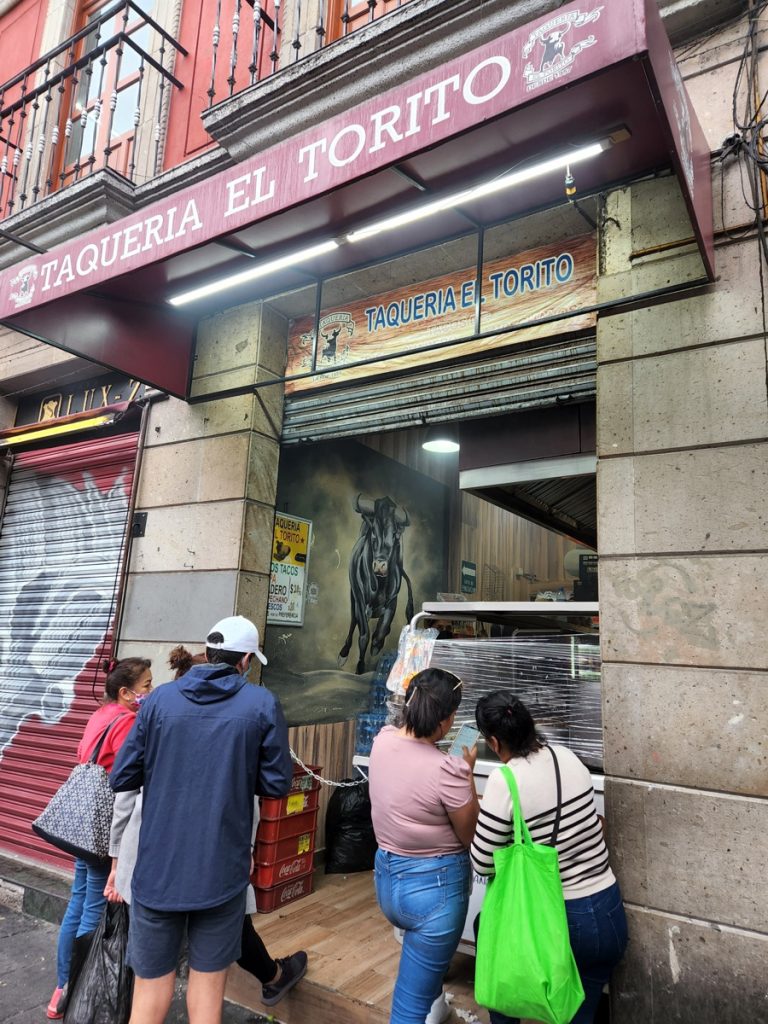
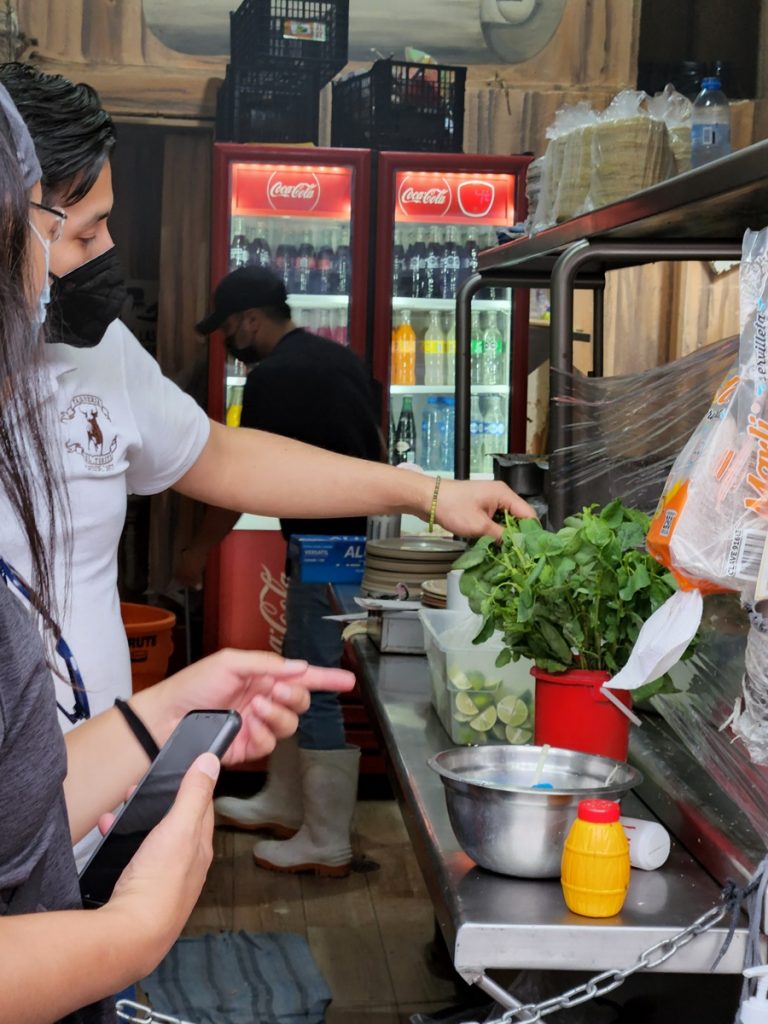
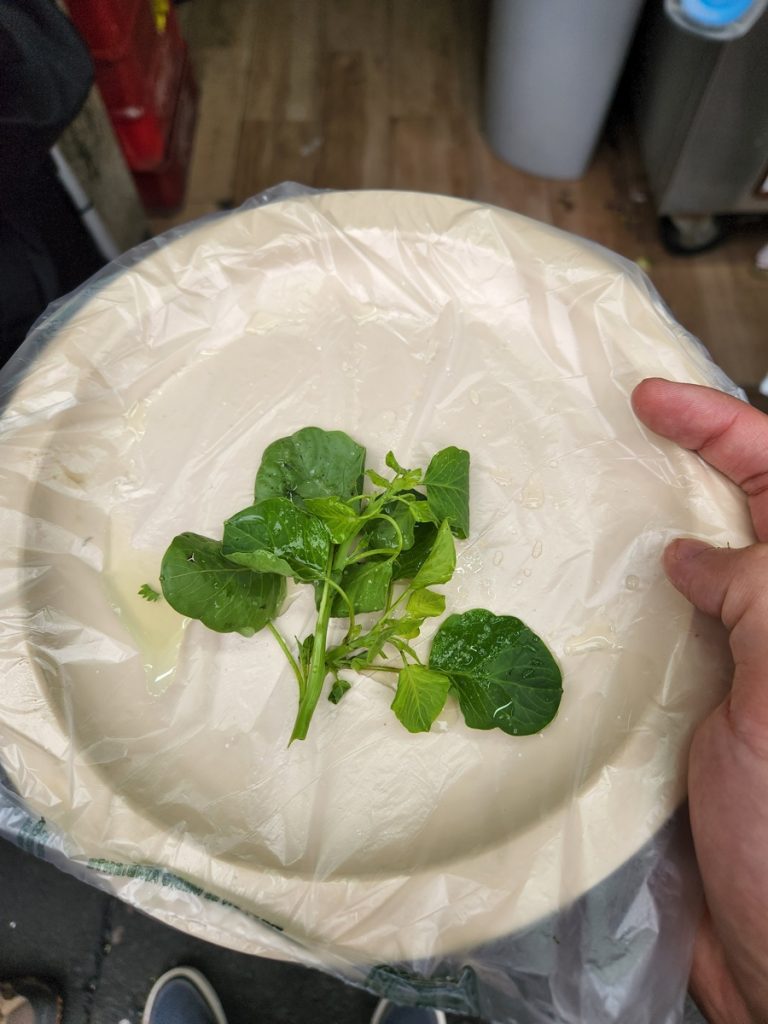

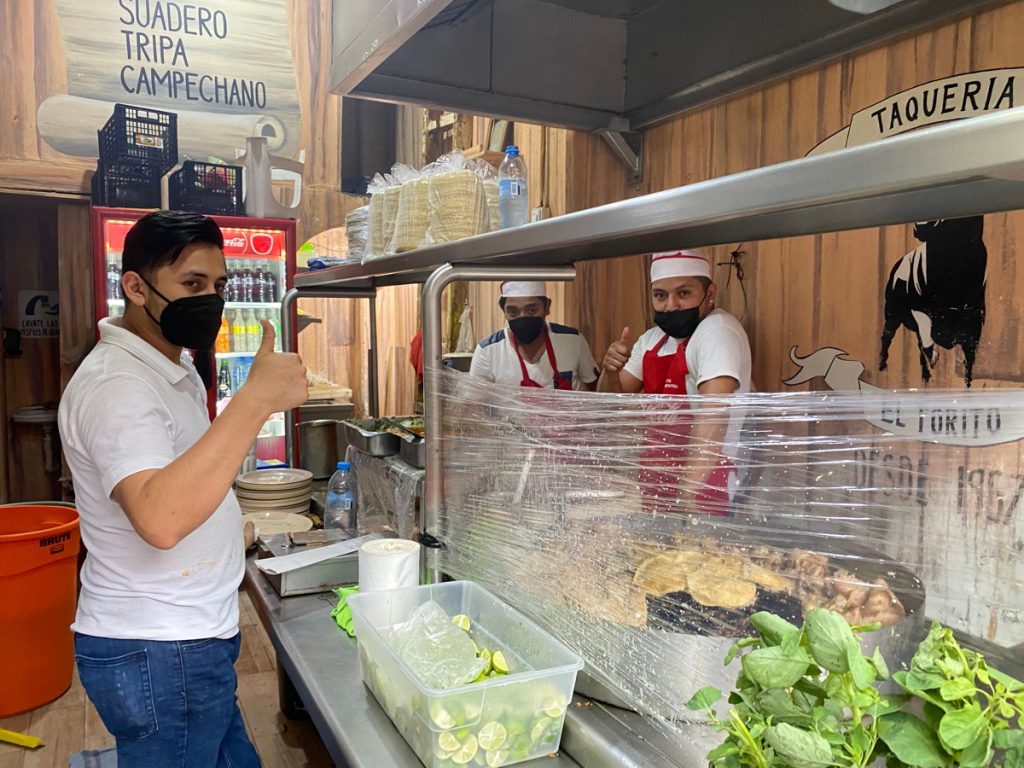
Unfortunately, we decided to take our tacos to go. A 15-minute walk back to the hotel plus other errands later, the food had gotten cold. Not only were we unable to fairly compare El Torito and Los Cocuyos, the congealed fat gave us stomach problems for the days to come…
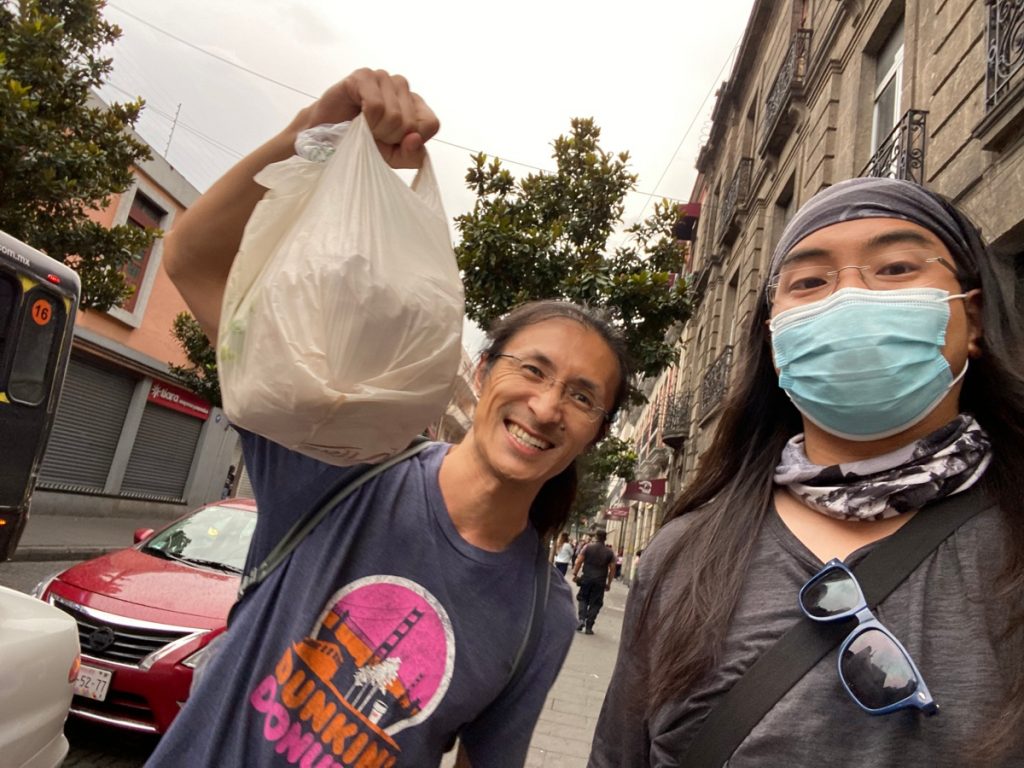
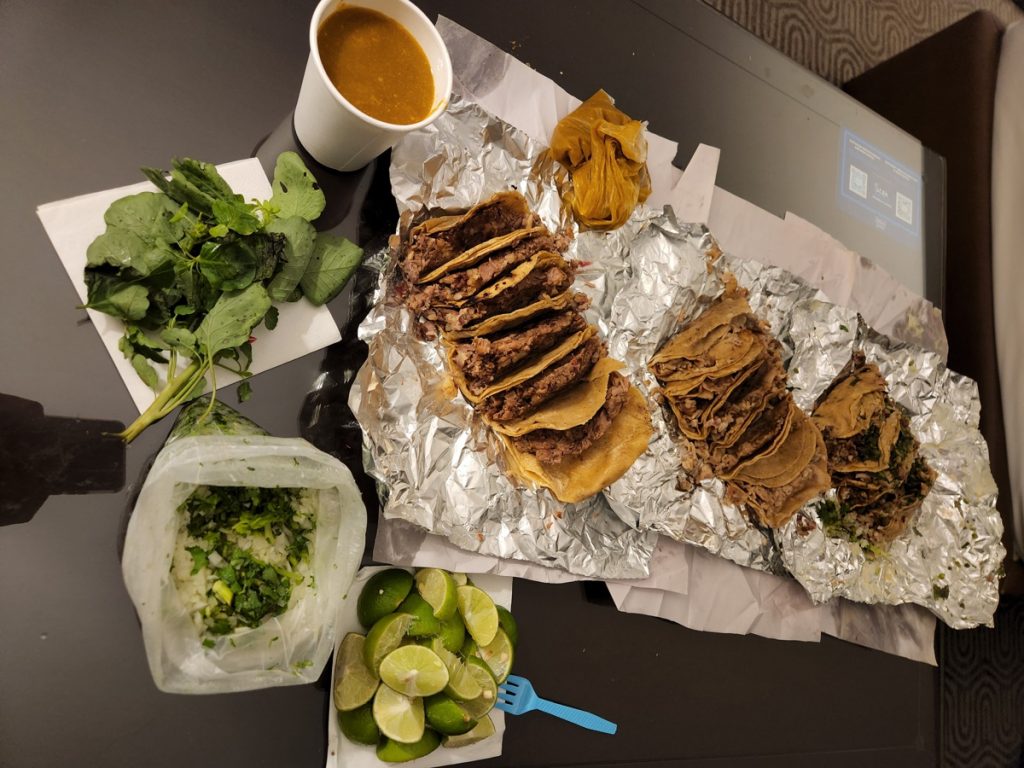
CDMX 2022 Trip Index

CDMX 2022 (1/8) – Day of Landing in Taco Heaven – Peter's Blog
September 1, 2022 at 6:49 pm[…] Day of Teotihuacan Pyramids […]
CDMX 2022 (3/8) – Day of History Museums – Peter's Blog
September 1, 2022 at 6:50 pm[…] Day of Teotihuacan Pyramids […]
CDMX 2022 (5/8) – Day of the James Bond Hotel – Peter's Blog
September 2, 2022 at 11:47 pm[…] Day of Teotihuacan Pyramids […]
CDMX 2022 (4/8) – Day of Instagram Destinations – Peter's Blog
September 5, 2022 at 8:26 pm[…] Day of Teotihuacan Pyramids […]
CDMX 2022 (8/8) – Random Observations – Peter's Blog
September 5, 2022 at 8:27 pm[…] Day of Teotihuacan Pyramids […]
CDMX 2022 (7/8) – Food Adventures – Peter's Blog
September 8, 2022 at 11:24 pm[…] Day of Teotihuacan Pyramids […]
SEA 2023 (11/17) – Chiang Rai: Itinerary – Peter's Blog
August 20, 2023 at 3:22 am[…] an entire European-styled house and estate. Walking down its quarter-mile driveway reminded me of La Gruta in Teotihuacan. Despite multiple signs along the way, Mah kept questioning how we knew there was a cafe […]